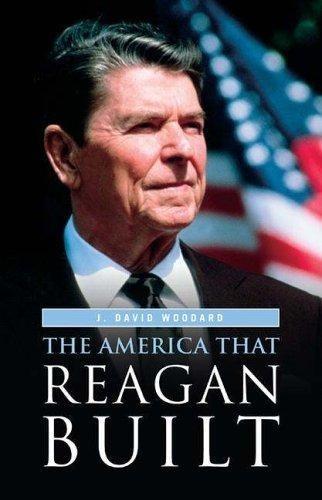
The America That Reagan Built
by
J. David Woodard
Published 15 Mar 2006
In the 1970s, Democratic hegemony came Morning in America: The Second Term 101 in for scrutiny. By 1980, the Democrats’ seemingly commanding posture began to unravel. Reagan won two elections, the GOP captured control of the Senate, and the conservative message began to trickle down to the state level. In his last address to the American people, Ronald Reagan asked a rhetorical question about the ‘‘shining city’’ that was the American political experiment. ‘‘And how stands the city on this wintry night? More prosperous, more secure and happier than it was eight years ago.’’ Ronald Reagan not only changed the country, he changed the world.
…
At the end of the decade the United States was the world’s only superpower, yet it would be held captive by countries with only a fraction of its political power, but united by television to worldwide religious followers across the globe. Postmodernism came of age in this climate in the decade of the 1980s. The election and re-election of ex-actor Ronald Reagan put a new gloss on the possibility of politics shaped by images alone. The convictions of the president were a throwback to an earlier time, but his style of image politics, carefully crafted and orchestrated for mass consumption, was of a newer era. The world was changing, and the older language of genres and forms was becoming obsolete. 5 Morning in America: The Second Term Democrats watched the calendar with a mounting sense of anticipation throughout the spring of 1984.
…
Mondale left the convention behind in the polls, while the Reagan campaign took a public pledge the next week not to raise taxes.13 Democratic unity at the convention came more from a shared disdain for Ronald Reagan than any enthusiasm for their candidate, and this lack of loyalty showed up in the vice-presidential nomination. Mondale undertook a very public process of interviewing candidates, more to placate interest group constituencies than to really choose someone he actually wanted as a running mate. In the end, party activists intruded and helped make his decision for him. Half the delegates Morning in America: The Second Term 83 to the convention were women, many of them committed feminists who threatened a floor fight if the nominee did not put a female on the ticket.
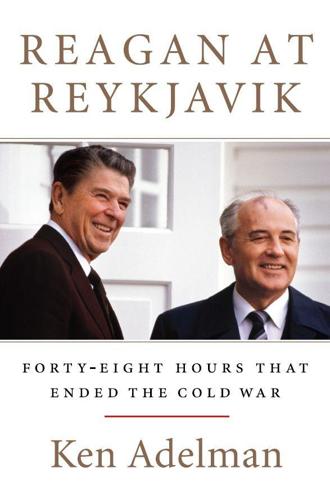
Reagan at Reykjavik: Forty-Eight Hours That Ended the Cold War
by
Ken Adelman
Published 5 May 2014
They loved his optimism, his conviction that America’s best days still lie ahead, that it was still morning in America. I sat for several television interviews and told tales about President Reagan, Reykjavik, and favorite moments with him. But I never felt that I did him justice. WHILE CAROL AND I had become emotional during the funeral, what happened the day before moved me the most. Unannounced and unexpected, Gorbachev had flown in from Moscow. He landed at what would later be named Ronald Reagan Washington National Airport and headed directly to the Capitol Rotunda. As the silent crowds continued to file slowly by the casket, Gorbachev was allowed to step inside the velvet rope alongside the honor guard.
…
Secure in our assessment, we had no problem with the grip-and-grin session we came to expect, if that would indeed help Gorbachev. After all, nobody was better at gripping and grinning than Ronald Reagan. THE AIR FORCE ONE carrying Reagan to Iceland—Sam 27000—had joined the presidential fleet in 1972. Although it was small compared with the 747 that would replace it, it had a history and a scale that Reagan loved. It was good that he did, since he would log more miles on it (630,000) than any of his predecessors. Fittingly, that plane now resides in the Ronald Reagan Presidential Library, seeming almost airborne on display in its own pavilion. Behind the presidential quarters were the staff conference area and a handful of seats for top presidential aides and secretaries.
…
Photographic Insert Eager for the quickly planned event, Reagan and Gorbachev greet each other at Hofdi House on Saturday, October 11, 1986. Neither imagined what was in store for him that weekend. (Ronald Reagan Library) Reykjavik was the second summit for Reagan and Gorbachev, after their meeting at Geneva the year before, in November 1985. At their first session on a chilly Swiss morning, a sprightly, coatless Reagan assisted the younger, overcoated Gorbachev up the steps of the villa. “I felt that we lost the game during these first movements,” grumbled a Soviet spokesman after watching the opening play. (Ronald Reagan Library) Billed as a low-key business meeting, Reykjavik was anything but. A hastily summoned Summit Preparatory Committee met on October 3 with forty-five representatives from various U.S. government agencies (on the left), Soviet agencies (right), and Icelandic officials (behind the photographers) to prepare for the unexpected superpower summit just one week away. (© Ljósmyndasafn Reykjavíkur/Kristjan Ari Einarsson) The government called back the newly crowned Miss World—Iceland’s own Hólmfríður Karlsdóttir—from a goodwill tour of Asia to be available in Reykjavik for press interviews over the weekend.
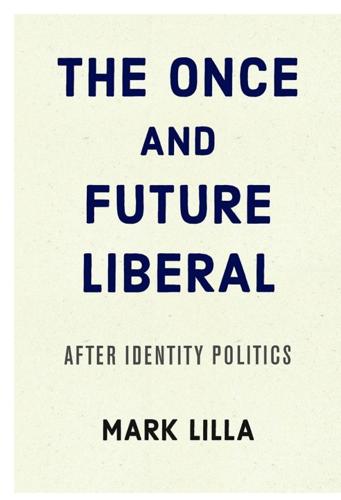
The Once and Future Liberal: After Identity Politics
by
Mark Lilla
Published 14 Aug 2017
Congressional Republicans wanted to stymie him no matter what it took. They shut down the government just because, and impeached Clinton for a peccadillo. Unlike Ronald Reagan, they became absolutists on tax cuts, gun control, and abortion, and purged from their ranks any who dared dissent. And they began participating in the daily bacchic rites of shock radio and Fox News, whipping each other and their base into a frenzy of apocalyptic doom about the state of the country. Morning in America? No, midnight! Midnight! Midnight! The impending conservative crack-up seemed obvious to cooler heads in the movement, and during the Clinton years several published excellent books on what was going wrong and how to get back on course.
…
The search for candidates has begun and no doubt some staffers are already dreaming of the offices they will occupy in the West Wing of the White House. If only American politics were so simple. Lose the flag, capture the flag. We liberals have played this game before and sometimes won. We have had Democratic presidents in four of the ten terms that followed Ronald Reagan’s victory in 1980, and there were significant policy victories during the administrations of Bill Clinton and Barack Obama. But scratch below the surface of presidential elections, which seem to follow their own historical rhythm, and things turn very dark, very fast. Clinton and Obama were elected and then reelected with messages that were long on hope and change.
…
A vision that would orient the Democratic Party and help it win elections and occupy our political institutions over the long term, so we might effect the changes we want and America needs. Liberals bring many things to electoral contests: values, commitment, policy proposals. What they don’t bring is an image of what our shared way of life might be. Ever since the election of Ronald Reagan the American right has offered one. And it is this image—not money, not false advertising, not fearmongering, not racism—that has been the ultimate source of its strength. In the contest for the American imagination, liberals have abdicated. The Once and Future Liberal is the story of that abdication.
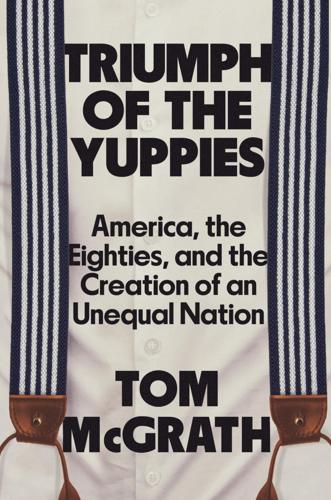
Triumph of the Yuppies: America, the Eighties, and the Creation of an Unequal Nation
by
Tom McGrath
Published 3 Jun 2024
With an abandoned steel mill in the background, Ronald Reagan told scores of unemployed steelworkers that brighter days were ahead; he’d deliver economic growth and jobs for everyone. It was a message he’d repeat in other places. If elected, he said, he would “restore the great, confident roar of American progress and growth and optimism.” His promise was clear: On his watch, with his policies, the prosperity and economic dominance of the postwar years, the American Century, would return. Such messages were persuasive to people like Len Balluck, who’d voted for Jimmy Carter in 1976 but now cast his vote for Ronald Reagan. Plenty of other blue-collar workers joined him, and their support mattered.
…
Most often, public assistance helped average working people through a catastrophic event like an illness, the death of a spouse, or a lost job until they could get back on their feet. Ronald Reagan didn’t share that kind of information, though. Instead, his message was that if Americans could just tame their runaway government and the people who abused it, the country—including places like Youngstown, where his sunniness and strength injected a new sense of hope—would return to the glory days of two decades before. The architect of Reaganomics—the set of revolutionary policies that Reagan campaigned on and that promised to alter the trajectory of the country as fundamentally as FDR’s New Deal had half a century earlier—was Ronald Reagan. His critics, and even some of his supporters, said Reagan didn’t always grasp the details of what his administration was doing, and that was true.
…
Chapter 9 1. the Reagan team thought long and hard about their strategy: “Trying to ‘Stay the Course’: President Reagan’s Rhetoric During the 1982 Election,” Presidential Studies Quarterly, Winter 1984. 2. Reagan’s approval: “Ronald Reagan Public Approval” (Gallup Data), The American Presidency Project, UC Santa Barbara, presidency.ucsb.edu. 3. the decision was made: Presidential Studies Quarterly, Winter 1984. 4. Speaking from the Oval Office: “Address to the Nation on the Economy,” October 13, 1982, Ronald Reagan Presidential Library and Museum, reaganlibrary.gov. 5. By August 1982: “Youngstown, Ohio Remained the Nation’s Highest Unemployment Area,” UPI, November 16, 1982. 6.
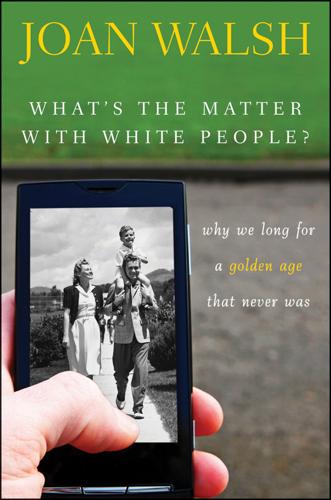
What's the Matter with White People
by
Joan Walsh
Published 19 Jul 2012
Carter’s presidency marked the point at which the percentage of white working-class people who identified as Democrats dropped sharply—it would drop 20 points, from 60 percent to 40 percent, between the midseventies and the early nineties, according to the University of Arizona’s Lane Kenworthy, and it hasn’t recovered since. After Carter, Ronald Reagan sounded themes of American unity and optimism. Just as Nixon had learned some of his law-and-order, culture-war tactics from Reagan’s divisive 1966 campaign, Reagan learned from Nixon’s fall. He mostly shed his nasty culture-warrior persona of the sixties to become the man who would awaken us to “Morning in America.” Reagan could afford to move to higher ground; Nixon had done the job of dividing us. And Democrats, running away from their own history, had no message to unite us.
…
And Democrats, running away from their own history, had no message to unite us. Part III The Loneliness of the Reagan-Era Do-Gooder Chapter 13 Government’s view of the economy could be summed up in a few short phrases: If it moves, tax it. If it keeps moving, regulate it. And if it stops moving, subsidize it. —Ronald Reagan, August 1986 Ronald Reagan wiped the political slate clean, erasing the history of American class conflict and the Democratic Party’s legacy of standing with the common man. Reagan made Republicans the populists, the party that protected the little guy against a bigger enemy, only this time it was Big Government—taxing your hard-earned money and giving it to people who didn’t deserve it—not Big Business.
…
Nobody paid much attention to the fact that Reagan’s boom was kicked off by stealth Keynesianism: Paul Volcker loosened up the money supply and ended the recession he’d helped induce by tightening it, and that cheaper money, combined with new defense spending, helped create jobs again. Unemployment fell from 9.5 to 7.2 percent by Election Day. That still wasn’t Morning in America for the unemployed, but it made Mondale’s talk about a troubled economy requiring government support seem like tired old liberalism. Why were Democrats trying to fix something that didn’t seem broken? • • • I was bewildered by Mondale’s crushing loss. What was I still missing about American politics?

Zero-Sum Future: American Power in an Age of Anxiety
by
Gideon Rachman
Published 1 Feb 2011
The rise of the personal computer and the Internet created new industries, destroyed old ones, raised economic productivity, transformed social life, and turbocharged globalization. America’s tech boom was crucial to banishing a fear of national decline that had hovered stubbornly over the 1980s, even as Ronald Reagan proclaimed “morning in America” and the United States triumphed in the cold war. Japanese brands seemed to dominate everything from cars to consumer electronics. As Alan Greenspan later noted, “even the TVs we depended on for news bore Sony, Panasonic and Hitachi brands. Not since Sputnik had America felt itself to be at such a scary disadvantage.”
…
Campbell, Iron Lady, 260. 20. Ibid. 21. Thatcher, Downing Street, 485. 3. THE UNITED STATES, 1980: THE REAGAN REVOLUTION 1. Ronald Reagan, An American Life (New York: Simon & Schuster, 1990), 227. 2. Roger Rosenblatt, “Man of the Year 1980: Ronald Reagan,” Time, January 2, 1981, 3. 3. Reagan wrote in his diary in 1982 that the press was wrong to argue that he was taking aim at the New Deal, and that his real target was the Great Society. See Dinesh D’Souza, Ronald Reagan: How an Ordinary Man Became an Extraordinary Leader (New York: Simon & Schuster, 1997), 61. 4. Reagan, American Life, 230. 5.
…
She was, by contrast, an unabashed admirer of the United States in general and of Ronald Reagan in particular. Her speechwriter Ronnie Miller remarked, “She loved America … and America loved her back.”19 John Campbell, her biographer, believes that “a part of her would really rather have been American.”20 As the Soviet bloc began to crumble, the partnership of Thatcher and Reagan took on a global significance. Thatcher was not exaggerating hugely when she wrote in her memoirs, “The West’s system of liberty, which Ronald Reagan and I personified in the eastern bloc, was increasingly in the ascendant; the Soviet system was showing its cracks.”21 While Thatcher and Reagan’s support of democracy in Eastern Europe fits a narrative in which the advances of economic and political freedom throughout the 1980s were essentially inseparable, elsewhere things were more complicated.

Evil Geniuses: The Unmaking of America: A Recent History
by
Kurt Andersen
Published 14 Sep 2020
Everything old was new again, yes, but to really work, the message had to seem simultaneously old and new, like Bruce Springsteen and brand-new-old-fashioned postmodern buildings. Morning in America was the revival of the nice familiar past, but it was happening right now, the way supply-side economics was abracadabra cutting-edge but drawn from ancient wisdom about wealth creation. The narrator of the Morning in America ad, the bona fide San Francisco ad genius Hal Riney, was also its author and producer, making the gorgeous facsimile of sincerity seem so authentic, like a singer-songwriter performing his own schmaltzy song.
…
By the time the election came around in 1980—after Iranians took over the U.S. embassy in Tehran and kept fifty-two Americans hostage for a year, and a brief economic recession sealed the deal—it wasn’t a big shock when Ronald Reagan won. But exactly what was that election’s “mandate” concerning the political economy? The campaign had run a TV ad with an excellent supply-side-for-dummies voice-over. “Ronald Reagan believes that when you tax something, you get less of it. We’re taxing work, savings, and investment like never before. As a result we have less work, less savings, and less invested.” See, if you pay less in taxes—and only if you pay less in taxes—America’s economic prosperity and stability will be restored.
…
Whereas during the 1960s, everyone was aware we were experiencing a great turning point in culture and politics, with almost everything changing in obvious ways—like how in the ’30s people were aware in real time that the Depression and New Deal were transformative, the beginning of a new America. The specific policy changes in the 1980s were profound in the aggregate, but beyond the nostalgic Reaganite Morning in America and freer-free-markets messaging, most of the changes were complicated and esoteric and seemed small, so they had a stealth quality. It didn’t feel quite like a paradigm shift because it was mainly carried out by means of a thousand wonky adjustments to government rules and laws, and obscure financial inventions, and big companies one by one changing how they operated and getting away with it—all of it with impacts that emerged gradually, over decades.
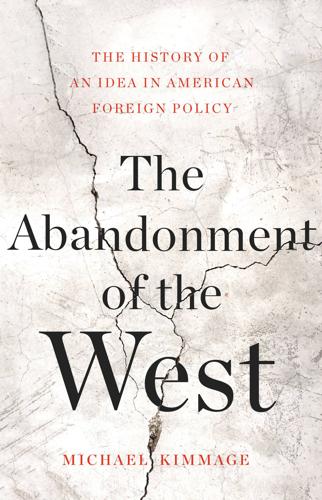
The Abandonment of the West
by
Michael Kimmage
Published 21 Apr 2020
On the Right, the decline of the West, the long predicted final sunset lodged in the very word west, was often the most disturbing scenario, if not to the Californian who promised morning in America on the campaign trail and who promised still more improbably a new dawn for the West, were he to be elected in the 1980 election. PESSIMISM ABOUT THE West was rampant in the postwar conservative movement. The book that inspired the movement, passages of which Ronald Reagan would memorize, was Wagnerian in its gloom. Like so many other big twentieth-century conservative books, Witness, which was published in 1952, was a book about the West.
…
Many American presidents saw in the twentieth-century United States the Kantian superstate of the modern era, the law-giving guarantor of a pax americana.14 Since the 1890s, the messianic and the legalistic strains of Western liberty have combined and collided in American foreign policy. The most eagerly messianic presidents were John F. Kennedy, Lyndon Johnson, Ronald Reagan and George W. Bush, though Ronald Reagan started no major war during his presidency and found a way to conduct arms control and other negotiations with the despised Soviets. JFK, LBJ and George W. Bush all indulged in high-level military adventures, wars of choice or wars dictated by a love of liberty. Teddy Roosevelt, Woodrow Wilson, Franklin Roosevelt and Harry Truman were messianic-legalistic, balancing military ventures with the furtherance of international order and the construction of multilateral arrangements and institutions.
…
To be sure, neoclassicism is no longer the answer. The 1998 Ronald Reagan Building and International Trade Center stands near the National Mall and is an entirely uninspired assertion of the neoclassical style. It completes the Federal Triangle project of 1929 to 1938, which added a suite of heavy neoclassical buildings to the space between the White House and the National Mall. The enormous Department of Commerce occupies one point on this triangle. It was completed in 1932, and the 1935 Department of Justice grimly occupies another corner. The Ronald Reagan Building of Pei, Cobb, Freed and Parthers hints mutely at a presidential and diplomatic narrative.
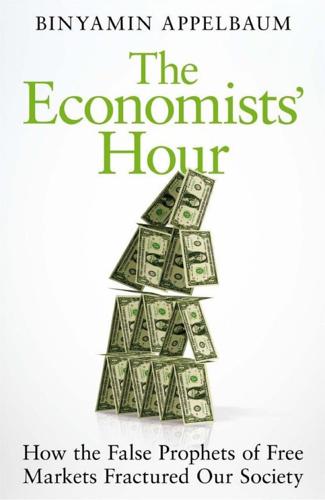
The Economists' Hour: How the False Prophets of Free Markets Fractured Our Society
by
Binyamin Appelbaum
Published 4 Sep 2019
“We are intensely interested in the supply side,” she said.52 Reaganomics Ronald Reagan made little mention of taxation during his failed 1976 presidential campaign, nor in the early months of his 1980 campaign. But after losing the Iowa caucuses to George H. W. Bush, Reagan headed into the New Hampshire primary in February 1980 needing a victory to reestablish himself as the front-runner. He found traction with voters by promising to cut taxes, debuting a series of ads that proved hugely popular. Announcer: Ronald Reagan believes that when you tax something, you get less of it. We’re taxing work, savings and investment like never before.
…
Clark was a pioneer in the development of national income accounting, but he got a little too excited about the uses of his measuring stick. 60. Ronald Reagan, “Reflections on the Failure of Proposition #1,” National Review, December 7, 1973. 61. Dart broke into the drugstore business by marrying Charles Walgreen’s daughter. After they were divorced, he left Walgreen’s to run Rexall. His second wife, Jane Bryan, was an actress who had appeared in several movies with Reagan, and the two couples became close friends. 62. Ronald Reagan, “Taxation,” November 28, 1978, reprinted in Reagan, in His Own Hand, ed. Kiron K. Skinner et al. (New York: Free Press, 2001). 63.
…
Jagdish Bhagwati, one of the profession’s most forceful and uncompromising advocates of free trade, is another longtime opponent of the free movement of capital. See John Williamson and Molly Mahar, A Survey of Financial Liberalization, Essays in International Finance (Princeton, N.J.: Princeton University Department of Economics, 1998). 58. Ronald Reagan, “Milton Friedman and Chile,” December 22, 1976. See Kiron K. Skinner et al., Reagan’s Path to Victory: The Shaping of Ronald Reagan’s Vision; Selected Writings (New York: Simon and Schuster, 2004), 98. 59. Economists, even those who disagreed with Friedman’s politics, generally regarded him as a deserving laureate for his academic work. Two letters opposing Friedman’s selection, by laureates in other disciplines, appeared in the New York Times on October 24, 1976.

The Great Divergence: America's Growing Inequality Crisis and What We Can Do About It
by
Timothy Noah
Published 23 Apr 2012
An inequality trend driven by large and quickly growing income shares at the summit is not capitalism’s norm. Piketty and Saez found the top decile consumed about 45 percent of the nation’s income from the mid-1920s until 1940. That decreased to about 34 percent during World War II and remained in that range through the 1981–82 recession. In 1984—the year President Ronald Reagan ran for reelection on the theme that it was “morning in America”—the top decile’s income share began to increase significantly, and it has increased most years ever since. In 2008 the top decile’s income share was 48 percent. For the top 10 percent, then, the income-share norm during the twentieth century wasn’t the current 48 percent, but rather the 34 percent level that prevailed for about forty years after World War II.
…
Today, except for a few survivals such as the obstinately rectangular Rolls-Royces of the old school, and a few such oddities such as the new British sports cars … there is a comparative absence of class groupings.24 Goldin and Margo quoted the MIT economist Lester Thurow saying that the wage differentials of the Depression and World War II “became the new standard of relative deprivation and were regarded as ‘just’ even after the egalitarian pressures of World War II had disappeared. Basically, the same differentials exist to this day.” Thurow said that in 1975. He couldn’t say the same in 1986. By then, the share of national income going to the top 10 percent was no longer 33 or 34 percent. It was 41 percent. It was, President Reagan insisted, morning in America. In one of the most effective political TV ads ever conceived, aired during Reagan’s 1984 reelection campaign, gauzy early-morning images of Americans at work and play and gentle pastoral music provided the background for the following recitation. It’s morning again in America. Today, more men and women will go to work than ever before in our country’s history.
…
Income share for the top 1 percent—the Undeniably, Really, and Stinking Rich, all with incomes today above $368,000—reached 24 percent in 1928, decreased to 13 percent by the end of World War II, decreased more slowly in the postwar years, and by 1960 stood at 10 percent, which was about where it stayed until Reagan’s morning in America. Then it increased to 12 percent in 1984, 14 percent in 1994, 20 percent in 2004, and 21 percent in 2008. For the one-percenters, the forty-odd years of relative stability after World War II suggest that the twentieth-century norm was an income share about half what it is today. To the extent that income share for the top 1 percent changed in the postwar years, it decreased rather than increased.

A First-Class Catastrophe: The Road to Black Monday, the Worst Day in Wall Street History
by
Diana B. Henriques
Published 18 Sep 2017
“how you all make money in this venture”: “Futures Board: Day One.” 4. SHIFTING GEARS a few rumbles of thunder: All weather descriptions are based on the Weather Underground historic archives, unless otherwise credited. He planned to watch the election returns: Confidential interviews. Massachusetts had landed in the Republican column: Gil Troy, Morning in America: How Ronald Reagan Invented the 1980s (Princeton, NJ: Princeton University Press, 2005), pp. 48–49, among several sources. Reagan’s budget policies would steadily deepen the federal deficit in the march toward 1987. His own firm belief in “supply-side economics,” which argued that tax cuts would stimulate more than enough economic growth to pay for themselves, would steadily deepen, but it was not uniformly held among even his closest financial and economic advisers.
…
His first words were about his wife, who had returned home: Ronald Reagan, “The President’s News Conference,” October 22, 1987, American Presidency Project website, at http://www.presidency.ucsb.edu/ws/index.php?pid=33594&st=&st1=. No one could have missed how distracted Reagan was: Ronald Reagan, “Statement by Assistant to the President for Press Relations [Marlin] Fitzwater on the Stock Market Decline,” October 19, 1987, American Presidency Project website, at http://www.presidency.ucsb.edu/ws/index.php?pid=33582&st=&st1=. On Black Monday, he had fielded reporters’ questions: Ronald Reagan, “Informal Exchange with Reporters,” October 19, 1987, American Presidency Project website, at http://www.presidency.ucsb.edu/ws/index.php?
…
We must move quickly before the connection gets settled in the mind of the average citizen” (FI003, FI004, FG006-07, 615488PD, Ronald Reagan Presidential Library Archives). “Certainly, when more than half of the loss has already been regained”: Ronald Reagan, “Informal Exchange with Reporters,” October 21, 1987, American Presidency Project website, http://www.presidency.ucsb.edu/ws/index.php?pid=33591&st=&st1=. an effort to deliver a more coherent message: Ronald Reagan, “The President’s News Conference,” October 22, 1987, American Presidency Project website at http://www.presidency.ucsb.edu/ws/index.php?

The Rise and Fall of the Neoliberal Order: America and the World in the Free Market Era
by
Gary Gerstle
Published 14 Oct 2022
See also Darren Dochuk, Anointed with Oil: How Christianity and Crude Made Modern America (New York: Basic Books, 2019). 19.Steve Fraser, “‘The Labor Question,’” in Steve Fraser and Gary Gerstle, eds., The Rise and Fall of the New Deal Order, 1930–1980 (Princeton, NJ: Princeton University Press, 1989), 55–84. 20.On Reagan’s pre-presidential career, see Lou Cannon, President Reagan: The Role of a Lifetime (New York: Simon and Schuster, 1991); Lou Cannon, Governor Reagan: His Rise to Power (New York: PublicAffairs, 2003); Rick Perlstein, The Invisible Bridge: The Fall of Nixon and the Rise of Reagan (New York: Simon and Schuster, 2014); Iwan Morgan, Reagan: American Icon (New York: Bloomsbury, 2016); Leo Sands, “Governor Ronald Reagan and the Assault on Welfare” (undergraduate dissertation, University of Cambridge, 2016). 21.Ronald Reagan, “Address Accepting the Presidential Nomination at the Republican National Convention in Detroit,” July 17, 1980, https://www.youtube.com/watch?v=e8IWm8m2F8M, accessed September 2, 2020. Reagan spoke these words: “I believe this generation of Americans today also has a rendezvous with destiny.” See also Gil Troy, Morning in America: How Ronald Reagan Invented the 1980s (Princeton, NJ: Princeton University Press, 2013). 22.Garry Wills, Reagan’s America: Innocents at Home (1987; New York: Penguin Press, 2000); Debora Silverman, Selling Culture: Bloomingdale’s, Diana Vreeland, and the New Aristocracy of Taste in Reagan’s America (New York: Pantheon Books, 1989); Michael Rogin, Ronald Reagan the Movie and Other Episodes in Political Demonology (Los Angeles: University of California Press, 1988). 23.Gerald Ford, a Republican, succeeded Nixon in 1974, but he was never elected, losing his only race for the presidency in 1976. 24.Michael Kazin, What It Took to Win: A History of the Democratic Party (New York: Farrar, Straus and Giroux, 2022); Michael Kazin, The Populist Persuasion: An American History (New York: Basic Books, 1995), chapters 9–10; Dan T.
…
Even before the pandemic struck, developments that ten years earlier would have seemed inconceivable now dominated politics and popular consciousness: the election of Donald Trump and the launch of a presidency like no other; the rise of Bernie Sanders and the resurrection of a socialist left; the sudden and deep questioning of open borders and free trade; the surge of populism and ethnonationalism and the castigation of once-celebrated globalizing elites; the decline of Barack Obama’s stature and the transformational promise that his presidency once embodied for so many; and the widening conviction that the American political system was no longer working, and that American democracy was in crisis—a crisis that the January 6, 2021, assault by a mob on the Capitol so shockingly dramatized. In this dizzying array of political developments, I discern the fall—or at least the fracturing—of a political order that took shape in the 1970s and 1980s and achieved dominance in the 1990s and first decade of the twenty-first century. I call this political formation a neoliberal order. Ronald Reagan was its ideological architect; Bill Clinton was its key facilitator. This book is a history of this political order’s rise and fall. It offers a history of our times. The phrase “political order” is meant to connote a constellation of ideologies, policies, and constituencies that shape American politics in ways that endure beyond the two-, four-, and six-year election cycles.
…
Reaching back to the New Deal order at the beginning of this book also serves the useful purpose of throwing into sharp relief how much the neoliberal order of recent times has differed from what preceded it.1 I then turn to the main event itself—the construction of the neoliberal order. This story unfolds in three acts: The first is the rise in the 1970s and 1980s of Ronald Reagan and the free market Republican Party he forced into being; the second is the emergence in the 1990s of Bill Clinton as the Democratic Eisenhower, the man who arranged his party’s acquiescence to the neoliberal order; and the third explores George W. Bush’s determination to apply neoliberal principles everywhere, in projects as radically dissimilar as building a post–Saddam Hussein Iraq and making America a more racially egalitarian nation.
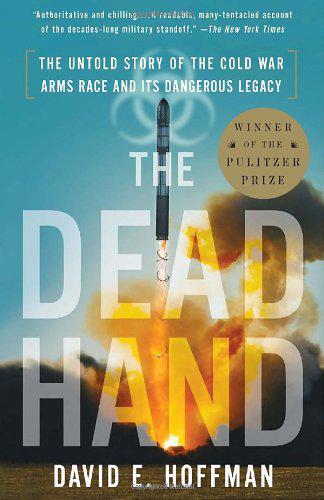
The Dead Hand: The Untold Story of the Cold War Arms Race and Its Dangerous Legacy
by
David Hoffman
Published 1 Jan 2009
His campaign was framed by inspirational television commercials, including one titled "Morning Again in America," which opened with glimpses of a farmhouse, followed by scenes of a wedding party and of an elderly man raising the American flag while young faces watched in adoration. As the flag filled the screen to the sounds of soft and stirring music, an announcer said, "It's morning again in America ... And under the leadership of President Reagan, our country is stronger, and prouder, and better. Why would we ever want to return to where we were less than four short years ago?" After the tense months of the previous autumn, Reagan wrote repeatedly in his diary early in 1984 that he had come to realize Soviet leaders might have a genuine fear of the United States, and he yearned to talk them out of it.
…
It was the craziest thing I had ever heard of: Simply put, it called for each side to keep enough nuclear weapons at the ready to obliterate each other, so that if one attacked, the second had enough bombs left to annihilate its adversary in a matter of minutes. We were a button push away from oblivion." Ronald Reagan, An American Life (New York: Simon & Schuster, 1990), p. 13. 7 Ronald Reagan, The Reagan Diaries (New York: HarperCollins, 2007), June 7, 1981. 8 Martin Anderson, presentation, Oct. 11, 2006, Hoover Institution, Stanford University, "Implications of the Reykjavik Summit on Its Twentieth Anniversary." Also, communication with author, Sept. 10, 2008. 9 Tony Thomas, The Films of Ronald Reagan (Secaucus, N.J.: Citadel Press, 1980), pp. 98-99. 10 Laurence W. Beilenson, The Treaty Trap: A History of the Performance of Political Treaties by the United States and European Nations (Washington, D.C.: Public Affairs Press, 1969), pp. 212, 219-221. 11 The author covered the Reagan campaign as a reporter for Knight-Ridder newspapers, and never picked up on Reagan's nuclear abolitionist views.
…
Here, he attends a May Day celebration, date unknown. [Ksenia Kostrova] Katayev in the 1990s. [Ksenia Kostrova] A Katayev drawing on modular missiles. [Hoover Institution Archives] President Ronald Reagan and the Joint Chiefs of Staff discussed the concept of missile defense on February 11, 1983. The president wrote in his diary that night, "What if we tell the world, we want to protect our people, not avenge them...?" [Ronald Reagan Library] Reagan unveiled his vision for the Strategic Defense Initiative in a televised speech on March 23, 1983. [Ray Lustig/Washington Post] The nuclear accident at Chernobyl in April 1986 was a turning point for Soviet leader Mikhail Gorbachev.
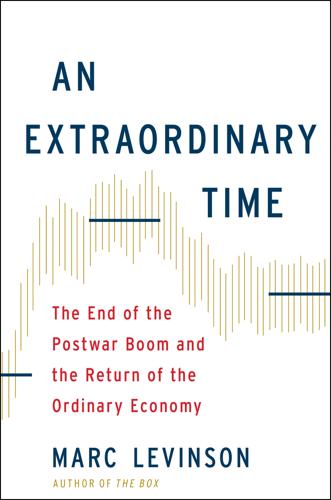
An Extraordinary Time: The End of the Postwar Boom and the Return of the Ordinary Economy
by
Marc Levinson
Published 31 Jul 2016
But it was in the United States that the Volcker shock caused the first political casualties. Construction of new homes fell by half. Auto sales, running at an annual rate of fourteen million units in October 1979, dropped below ten million. The unemployment rate jumped nearly two percentage points. Although the recession would be brief, it was enough to elect Ronald Reagan president.7 RONALD REAGAN WAS AN ICON OF THE RIGHT. A FORMER ACTOR and corporate pitchman, he had served two terms as governor of the fast-growing state of California. He said the right conservative things, praising free enterprise and small government, and even the blunt promise to “send the welfare bums back to work,” which had carried him to the governorship in 1966, came with a smile and a friendly wave.
…
Classification: LCC HC54 .L398 2016 (print) | LCC HC54 (ebook) | DDC 330.9/045—dc23 LC record available at https://lccn.loc.gov/2016017970 10 9 8 7 6 5 4 3 2 1 To Kay, for everything Contents Introduction 1 | The New Economics 2 | The Magic Square 3 | Chaos 4 | Crisis of Faith 5 | The Great Stagflation 6 | Gold Boys 7 | Quotas and Concubines 8 | The Export Machine 9 | The End of the Dream 10 | The Right Turn 11 | Thatcher 12 | Socialism’s Last Stand 13 | Morning in America 14 | The Lost Decade 15 | The New World Acknowledgments Notes Index Introduction On Sunday, the fourth of November, the traffic stopped. University students spread blankets on the motorway and picnicked to the sounds of a flute. Young children raced through stoplights on their roller skates.
…
While the statist model had failed to revive growth, stimulate investment, and raise living standards in both France and Spain, more market-oriented policies had proven no more efficacious. Neither approach offered a realistic chance of bringing back the glorious years, which were beyond the ability of any government to restore.21 CHAPTER 13 Morning in America October 6, 1979, was a chilly Saturday in Washington. The coming Monday was a government holiday, Columbus Day, and much of official Washington had scattered for the long weekend. Many of those who remained, along with the news media, were keeping an eye on Pope John Paul II, who was paying the first-ever papal visit to the White House to meet with President Carter; he would lead an open-air mass at the foot of the US Capitol the following day.

The Code: Silicon Valley and the Remaking of America
by
Margaret O'Mara
Published 8 Jul 2019
Macintosh ads blanketed the nation’s television airwaves in the months that followed, through the Winter and Summer Olympics, through a presidential campaign season of ads celebrating the Republicans’ “Morning in America” and the Democrats’ first female vice-presidential nominee. No other Mac ad was quite as memorable as that Super Bowl spot—few ads in history ever matched the buzz it created—but the message of all of them was the same. We are not IBM. We are not the establishment. Our computers will set you free. Over video of an elegantly manicured female finger clicking on a mouse, the tagline for all of them read: “Macintosh. The computer for the rest of us.” MORNING IN AMERICA By October, as the economy sped up to a gallop and the Mondale campaign limped toward an expected drubbing on Election Day, Regis McKenna had gotten philosophical.
…
There were CEOs like Jerry Sanders of Advanced Micro Devices (AMD), who bought a Rolls Royce one week and a top-of-the-line Mercedes the next. And of course there were Steve Jobs of Apple and Bill Gates of Microsoft, who came to exemplify a new sort of corporate leader: young, nonconformist, and astoundingly rich. Then there was the man who gave his name to the era, Ronald Reagan, crusader against big government, defender of deregulated markets, standard-bearer of what he called “the decade of the entrepreneur.” For the Great Communicator, no place or industry better exemplified American free enterprise at work than Silicon Valley, and he was particularly enthusiastic about extolling its virtues to foreign audiences.
…
From Horatio Alger to Andrew Carnegie to Henry Ford, politicians and journalists lifted up the figure of the ingenious, bootstrapping entrepreneur as an example and inspiration of what Americans could and should do. Only in America could you rise from rags to riches. Only in America could you be judged on your own merits, not your pedigree. In this telling, Silicon Valley seemed just like the latest and greatest example of the American Revolution in action. * * * — Ronald Reagan was right. The high-tech revolution was an only-in-America story. And he and so many others were right to laud people like Jobs and Gates and Hewlett and Packard as entrepreneurial heroes. Silicon Valley could never have come to be without the presence of visionary, audacious business leaders.
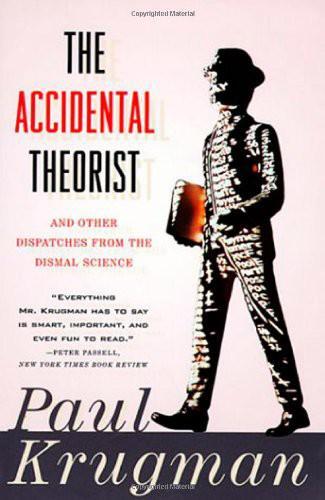
The Accidental Theorist: And Other Dispatches From the Dismal Science
by
Paul Krugman
Published 18 Feb 2010
If they concede that six years and counting of noninflationary growth in the nineties have had little if anything to do with the policies of Bill Clinton, they can hardly avoid the implication that seven years of expansion during the eighties may have had equally little to do with the policies of Ronald Reagan. And the legend of Reaganomics—which is gradually losing its magic anyway as “morning in America” recedes ever further into the mists, while the debts Reagan left us remain—is about all the supply-siders have left. What is supply-side economics? It is not, as some of its apologists would have it, simply the recognition that the supply side of the economy matters; one would be hard-pressed to find a card-carrying economist who disagrees with that proposition.
…
To say that America was a far more unequal society in 1989 than it was in 1973 is a simple statement of fact, not an attack on Ronald Reagan. Think about the parable of the fishermen and the prospectors: The greater inequality of the latter society did not come about because it has worse leadership but because it lives in a different environment. And changes in the environment—in world markets, or in technology—might change a society of middle-class fishermen into a society with dismaying extremes of wealth and poverty, without it necessarily being the result of deliberate policies. In fact, it’s pretty certain that this is what has happened in the United States. Ronald Reagan did not single-handedly cause the incomes of the rich to soar and those of the poor to decline.
…
I’m not saying that Clinton’s policies led to that result—they accounted for only part of the good news about the deficit, and hardly any of the rest. But the point is that the supply-siders were absolutely sure that his policies would produce disaster—and indeed, if their doctrine had any truth to it, they would have. Nor, I would argue, do supply-side views spread because they are good politics. True, Ronald Reagan won on a supply-side platform—but one suspects he would have won on almost any platform, and that the taunts of “voodoo economics” actually cost him some votes. Today, the supply-side label is a clear liability. Even promoters of the concept shy away from the label. In 1994, Republican leaders like Gingrich and Dick Armey chose to conceal the extent of their tax-cutting fervor from the voters, who they judged would not trust an economic program based on supply-side assumptions.

Words That Work: It's Not What You Say, It's What People Hear
by
Dr. Frank Luntz
Published 2 Jan 2007
He actually knew who was buried in Grant’s tomb—because he was at the funeral. And so on. But just as nostalgia doesn’t sell consumer goods, it doesn’t sell political candidates. This was the exact opposite of Reagan’s “Morning in America” language, and it left Americans cold. Not since the “Return to Normalcy” campaign of Warren Harding in 1920 has a presidential candidate harkened back to the days gone by and won with that message. Much more consistent with the American ethos was the conclusion of Ronald Reagan’s farewell letter to the American people in 1994, in which he disclosed that he had Alzheimer’s disease: “I know that for America, there will always be a bright dawn ahead.”5 Indomitable good cheer—in a letter announcing that he was afflicted with a cruel, terminal illness.
…
Kennedy——A Time for Greatness 1964: Barry Goldwater——In Your Heart, You Know He’s Right A Choice, Not an Echo 1964: Lyndon Johnson——The Stakes Are Too High for You to Stay at Home All the Way with LBJ Vote, As If Your Whole World Depended on It 1968: Richard Nixon——Nixon’s the One 1972: George McGovern——Come Home, America 1972: Richard Nixon——Now More than Ever Acid, Amnesty, and Abortion [against McGovern] 1976: Gerald Ford——He’s Making Us Proud Again 1976: Jimmy Carter——A Leader, for a Change 1980: Ronald Reagan——Are You Better Off Than You Were Four Years Ago? 1984: Ronald Reagan——It’s Morning Again in America 1984: Walter Mondale——America Needs a Change 1988: George Bush——A Kinder, Gentler Nation 1992: Bill Clinton——Putting People First It’s the Economy, Stupid 1992: Ross Perot——United We Stand Ross for Boss 1996: Bill Clinton——Building a Bridge to the Twenty-first Century 1996: Bob Dole——The Better Man for a Better America 2000: Al Gore——Prosperity and Progress Prosperity for America’s Families 2000: George W.
…
There is certainly a time and a place for high-flown, literary language. But to capture a listener’s attention the language doesn’t need to be urbane or erudite—or use words like, well . . . urbane or erudite. It does not necessarily need the uplifting, ennobling tone of Ted Sorenson (John F. Kennedy’s friend and speechwriter) and Peggy Noonan (gifted scribe for Ronald Reagan), the two great speechwriters of our time. The lofty language of Sorensen and Noonan transcends ideologies and generations, moving listeners just as much today as when their words were first spoken by others decades ago. Noonan was once asked to reflect on the craft of wordsmithing and speechwriting, and I think she had it right: Most of us are not great leaders speaking at great moments.

End This Depression Now!
by
Paul Krugman
Published 30 Apr 2012
Yet the average inflation rate over that period was only 2.5 percent, and if you excluded volatile food and energy prices—which Meltzer himself said you should—the average inflation rate was only 1.4 percent. These inflation rates were below historical norms. In particular, as liberal economists loved to point out, inflation was much lower under Obama than it had been in Ronald Reagan’s supposedly halcyon, “morning in America” second term. Furthermore, people like me knew that it would turn out this way—that runaway inflation just wasn’t going to happen as long as the economy stayed depressed. We knew this both from theory and from history, because the fact was that after 2000 Japan had combined large deficits with rapid money growth in a depressed economy and, far from experiencing severe inflation, remained stuck in deflation.
…
Until the recent crisis, the worst setback experienced by the U.S. economy since the Great Depression was the “double dip” of 1979 to 1982—two recessions in close succession that are best viewed as basically a single slump with a stutter in the middle. At the bottom of that slump, in late 1982, real GDP was 2 percent below its previous peak. But the economy proceeded to bounce back strongly, growing at a 7 percent rate for the next two years—“morning in America”—and then returned to its normal growth track. The Great Recession—the plunge between late 2007 and the middle of 2009, when the economy stabilized—was steeper and sharper, with real GDP falling 5 percent over the course of eighteen months. More important, however, there has been no strong bounce-back.
…
For the last fifty years the business of ending recessions has basically been the job of the Federal Reserve, which (loosely speaking) controls the quantity of money circulating in the economy; when the economy turns down, the Fed cranks up the printing presses. And until now this has always worked. It worked spectacularly after the severe recession of 1981–82, which the Fed was able to turn within a few months into a rapid economic recovery—“morning in America.” It worked, albeit more slowly and more hesitantly, after the 1990–91 and 2001 recessions. But it didn’t work this time around. I just said that the Fed “loosely speaking” controls the money supply; what it actually controls is the “monetary base,” the sum of currency in circulation and reserves held by banks.
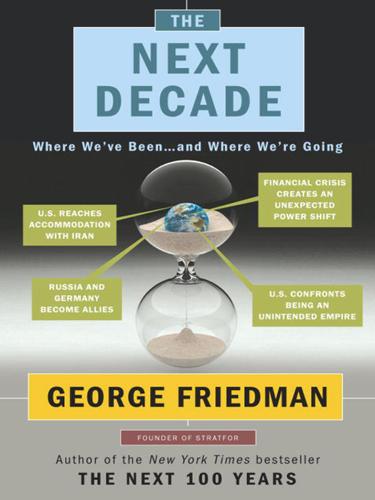
The Next Decade: Where We've Been . . . And Where We're Going
by
George Friedman
Published 25 Jan 2011
In retrospect, Roosevelt’s frantic one hundred days of legislation had little effect on the Depression, which was ended by World War II rather than by his economic policies. Reagan also promised actions, although in the end the solution rested not with the president but with the Federal Reserve. Nonetheless, describing the times as being “Morning in America,” a phrase that was part of his 1984 campaign, Reagan, like Roosevelt before him, tried to change the expectations of the public, stabilizing the political situation and buying time for the economy to heal without weakening the state. Both Roosevelt and Reagan understood that the real threat of an economic crisis would be its political impact, with the misery that piled up wrecking the entire system.
…
D863.F75 2011 909.83’1—dc22 2010043116 eISBN: 978-0-385-53295-2 v3.1 For Don Kuykendall, Friend I hope to have God on my side, but I must have Kentucky. —ABRAHAM LINCOLN Rules are not necessarily sacred, principles are. —FRANKLIN ROOSEVELT We cannot play innocents abroad in a world that is not innocent. —RONALD REAGAN It is necessary for a prince who wishes to maintain his position to learn how not to be good, and to use this knowledge or not to use it according to necessity. —NICCOLÒ MACHIAVELLI CONTENTS Cover Other Books by This Author Title Page Copyright Dedication LIST OF ILLUSTRATIONS AUTHOR’S NOTE INTRODUCTION: REBALANCING AMERICA CHAPTER 1 THE UNINTENDED EMPIRE CHAPTER 2 REPUBLIC, EMPIRE, AND THE MACHIAVELLIAN PRESIDENT CHAPTER 3 THE FINANCIAL CRISIS AND THE RESURGENT STATE CHAPTER 4 FINDING THE BALANCE OF POWER CHAPTER 5 THE TERROR TRAP CHAPTER 6 REDEFINING POLICY: THE CASE OF ISRAEL CHAPTER 7 STRATEGIC REVERSAL: THE UNITED STATES, IRAN, AND THE MIDDLE EAST CHAPTER 8 THE RETURN OF RUSSIA CHAPTER 9 EUROPE’S RETURN TO HISTORY CHAPTER 10 FACING THE WESTERN PACIFIC CHAPTER 11 A SECURE HEMISPHERE CHAPTER 12 AFRICA: A PLACE TO LEAVE ALONE CHAPTER 13 THE TECHNOLOGICAL AND DEMOGRAPHIC IMBALANCE CHAPTER 14 THE EMPIRE, THE REPUBLIC, AND THE DECADE ACKNOWLEDGMENTS About the Author LIST OF ILLUSTRATIONS Major American Trade Relations Countries with a U.S.
…
Yet at the same time it is the most democratic, as the presidency is the only office for which the people, as a whole, select a single, powerful leader. In order to understand this office I look at three presidents who defined American greatness. The first is Abraham Lincoln, who saved the republic. The second is Franklin Roosevelt, who gave the United States the world’s oceans. The third is Ronald Reagan, who undermined the Soviet Union and set the stage for empire. Each of them was a profoundly moral man … who was prepared to lie, violate the law, and betray principle in order to achieve those ends. They embodied the paradox of what I call the Machiavellian presidency, an institution that, at its best, reconciles duplicity and righteousness in order to redeem the promise of America.
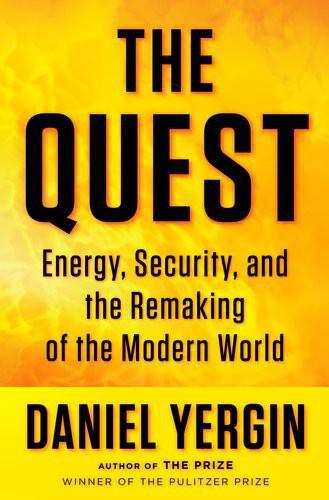
The Quest: Energy, Security, and the Remaking of the Modern World
by
Daniel Yergin
Published 14 May 2011
Reflecting on his experience, Carter summed it up this way: “It was like gnawing on a rock.”10 “PRODUCTION, PRODUCTION, PRODUCTION” If Jimmy Carter was the energy pessimist, prophesying about the great dangers ahead and warning Americans to change their ways, Ronald Reagan was the opposite, the sunny optimist, the beacon of self-confidence, the proponent of a new “morning in America.” The Reagan administration, which came into office in 1981, was determined to let market principles and price signals shape the energy marketplace. It was also responding to the distortions, bureaucratic nightmare, and endless litigation that resulted from the oil and natural gas price controls that Richard Nixon had hurriedly put in place a decade earlier.
…
Bill and the Making of Modern America (Washington, DC: Brassay’s, 2000), p. 287. 26 Ronald Reagan, Reagan: A Life in Letters, eds. Kiron Skinner, Annelise Anderson and Martin Anderson (New York: Free Press, 2003), p. 143 (“won’t fly”). 27 Ronald Reagan with Richard G. Hubler, Where’s the Rest of Me? (New York: Duell, Sloan and Pearce, 1965), p. 273 (“most electric house”); Lou Cannon, Governor Reagan: His Rise to Power (New York: Public Affairs, 2003), p. 111 (“more refrigerators”), ch. 6; Nancy Reagan with William Novak, My Turn: The Memoirs of Nancy Reagan (New York: Random House, 1989), p. 128 (Hoover Dam). 28 General Electric, “Ronald Reagan and GE,” webpage at http://www.ge.com/reagan/video.html.
…
Government policies at both federal and state levels started to promote greater efficiency through tax incentives, regulations, and mandates. California was a pioneer. The state was rocked hard by the 1973 oil crisis not only because of its dependence on the car but also because its utilities burned a lot of oil. The next year, Governor Ronald Reagan, convinced by arguments about frugality and reducing energy waste, overruled his own staff and approved the establishment of the California Energy Commission. Thus did Ronald Reagan become the progenitor of the commission that set about writing increasingly strict rules for energy efficiency that became a model across the United States. Other states followed.8 Utilities began to promote conservation through information programs and by sending energy auditors out to poke around in attics, measuring insulation, and in basements, to check out furnaces.

The Long Boom: A Vision for the Coming Age of Prosperity
by
Peter Schwartz
,
Peter Leyden
and
Joel Hyatt
Published 18 Oct 2000
Meanwhile, the United States couldn't get Iranian revolutionaries to release American hostages held for more than a year. Jimmy Carter was the president in 1980, running against Ronald Reagan, whose campaign slogan was "Are you better off today than you were four years ago?" The resounding answer was no, and Reagan won in a Republican landslide. Four years later, he changed the slogan of his reelection campaign to "It's morning again in America." Reagan was onto something with that slogan, apart from showing the power of confidence and optimism. After all the darkness of the 1970s, some rays of hope started to break out in the 1980s.
…
That's based on estimates that do not factor in the higher growth rates we think will become prevalent soon. The next President will determine the most productive investments for this extraordinary national wealth. This election highlights the difference between looking forward to the future or looking backward to the past. Bush tends to look toward the past, primarily by resurrecting the formula Ronald Reagan rode to power twenty years ago. Cutting taxes may have been appropriate back then to stimulate an economy in recession, but cutting taxes significantly in our high growth economy of today is unwise. The Federal Reserve Bank is seeking to do the opposite—tightening credit to slow growth and ward off inflation.
…
They're going to completely exploit the situation, grind the workers into the ground, squeeze every last penny out of the consumer, and then leave us living in a cesspool of pollution. It's going to be an utter disaster. And the disaster is not just looming here in England. You guys must be seeing the same thing happening back in the states. For god's sake, Ronald Reagan was elected president of the United States a month ago. What are Americans thinking by electing a bad movie actor as leader of the Free World? He's going to out-Thatcher Thatcher, plus get the world into a war. He's promising to build up the military and take on the Soviets, Give me a break—the Soviet Union has 40,000 nuclear bombs.
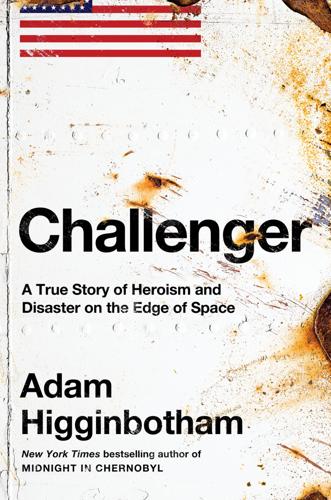
Challenger: A True Story of Heroism and Disaster on the Edge of Space
by
Adam Higginbotham
Published 14 May 2024
Standing at the foot of the staircase, Pinky Nelson thought he saw something else in Young’s emotional transformation: a man simply astonished to be alive. * * * The success of Columbia’s first mission was heralded across the world as a new dawn of the Space Age for the United States, a fitting overture for the new President’s promised Morning in America, a technological redemption for a nation longing to emerge from the dismal shadow of foreign and domestic failures that had loomed over the country for more than a decade. Recognizing the symbolic weight of the space program and NASA’s past achievements, Reagan seized the moment to bind the shuttle project into his message of a resurgent country, recasting outer space as the “high frontier,” ripe for conquest by the spiritual descendants of the intrepid pioneers who had gone west a century before.
…
Around him, the other flight controllers sat stunned, faces slack with shock. No one said a word. Nesbitt knew he had to speak, but he had no information to explain what he was witnessing. His mind raced. He thought of his responsibility to the public, and to the astronauts’ families. He thought, suddenly, of the attempt on Ronald Reagan’s life nearly five years before: in the confusion that followed, CBS news anchor Dan Rather had announced that White House press secretary James Brady had been killed—only to discover that Brady, despite the bullet in his head, remained very much alive. Nesbitt didn’t want to make a mistake like that.
…
While the announcement garnered little attention in the media, Navy, Air Force, and Marine pilots and flight engineers at combat bases and airfields around the world began studying the NASA rubric carefully; the call for new astronauts had, predictably, electrified the entire brotherhood of American military aviators. * * * In his office at Edwards Air Force Base, thirty-seven-year-old Captain Dick Scobee found news of the announcement buried on page 22 of the Los Angeles Times, sandwiched between a story about California Governor Ronald Reagan’s potential as a Republican candidate for President and a half-page advertisement for JCPenney belted radials. He clipped it from the newspaper and took it home to show his wife. It was a day June Scobee had dreaded for years, and hoped would never come. When she and her husband had met almost two decades before at a Baptist hayride in San Antonio, Texas, Dick was fresh from high school and already in the Air Force.

Slouching Towards Utopia: An Economic History of the Twentieth Century
by
J. Bradford Delong
Published 6 Apr 2020
Yet it did not do better—save for curbing the union movement in Britain, and providing income gains for the rich through tax cuts, as well as through the side effects of wage stagnation, which were truly staggering in magnitude. Why didn’t discontent with neoliberalism’s failure to deliver cause another turn of the political-economic societal-organizational wheel? I believe it lasted because Ronald Reagan won the Cold War. Or, rather, I believe it was because soon after Ronald Reagan’s presidency came to an end, the Cold War came to an end, and he was given credit for it. And the manifest failure of ideas in the shop window of possibilities weren’t uniquely being sold by the right. Looking back from today, or from the 1990s, or even from the late 1970s, on the phenomenon of really-existing socialism, perhaps the most striking feature is how inevitable the decay and decline of the system was.
…
Jaffa, Crisis of the House Divided: An Interpretation of the Issues in the Lincoln-Douglas Debates, Seattle: University of Washington Press, 1973; Harry V. Jaffa, Storm over the Constitution, New York: Lexington Books, 1999. 14. Tim Naftali, “Ronald Reagan’s Long-Hidden Racist Conversation with Richard Nixon,” Atlantic, July 30, 2019, www.theatlantic.com/ideas/archive/2019/07/ronald-reagans-racist-conversation-richard-nixon/595102; George Stigler, “The Problem of the Negro,” New Guard 5 (December 1965): 11–12. 15. Dan Ziblatt, Conservative Parties and the Birth of Democracy, Cambridge: Cambridge University Press, 2017. 16.
…
But those who had weak claims on a technocratic level, and yet benefited from government subsidies, did so because they had, and were good at exercising, political power. To reduce anxiety, Reagan and his allies increasingly pushed the idea that no spending cuts at all would be required: lifting the hand of regulation from the economy, combined with tax cuts, would spur economic growth enough to quickly reverse the deficits. It would be “morning in America.” No one with a quantitative grasp of the government’s budget and its pattern of change ever meant this story to be taken seriously. But the broader administration welcomed its dissemination. In fact, the tax cuts, the expansion of the military budget, and the disarray over spending cuts left the United States with large budget deficits throughout the 1980s.

The Impulse Society: America in the Age of Instant Gratification
by
Paul Roberts
Published 1 Sep 2014
Pay,” New York Times, June 29, 2013, http://www.nytimes.com/2013/06/30/business/an-unstoppable-climb-in-ceo-pay.htmlpagewanted=all. 12. Diane Stafford, “High CEO Pay Doesn’t Mean High Performance, Report Says,” Kansas City Star, Aug. 28, 2013, http://www.kansascity.com/2013/08/28/4440246/high-ceo-pay-doesnt-mean-high.html. 13. Brian Montopoli, “Ronald Reagan Myth Doesn’t Square with Reality,” CBSNews, Feb. 4, 2011, http://www.cbsnews.com/news/ronald-reagan-myth-doesnt-square-with-reality/. 14. Peter Beinart, “The Republicans’ Reagan Amnesia,” The Daily Beast, Feb. 1, 2010, http://www.thedailybeast.com/articles/2010/02/01/the-republicans-reagan-amnesia.html. 15. Richard W. Fisher, “Ending ‘Too Big to Fail.” 16.
…
.§ Instead, many of us embraced the ideal of economic individualism, resurrected in all its Gilded Age grandeur, under which a person’s fortunes were seen largely as a matter of individual initiative. Granted, in a globalizing, digitalizing, shareholder-dominated economy, individual initiative often fell painfully short. But this paradox failed to dislodge the potent message of unfettered economic opportunity: sooner or later, it really would be morning in America. In the meantime, another factor was diluting our anger and anxiety. Many Americans might have found their fortunes derailed in the efficient marketplace, but that same marketplace was allowing us to gratify our aspirations in other ways. Thanks to remarkable efficiencies in computing, nearly every kind of product or service could be produced and delivered for a fraction of what preceding generations had paid.
…
Almost overnight, our postwar prosperity vanished. Incomes stagnated. Joblessness was epidemic. The confidence we’d enjoyed in American economic dominance had been replaced by the insecurity and unfamiliarity of a more global economy. But our wavering sentiment reflected another, deeper change. In the 1980s, conservative politicians such as Ronald Reagan had embarked on a series of bold new economic and social policies. Where governments since Roosevelt’s New Deal had played a heavy role in the economy, we now shifted to a free-market, or “laissez-faire,” policy that granted the maximum degree of economic freedom for businesses and individuals alike.
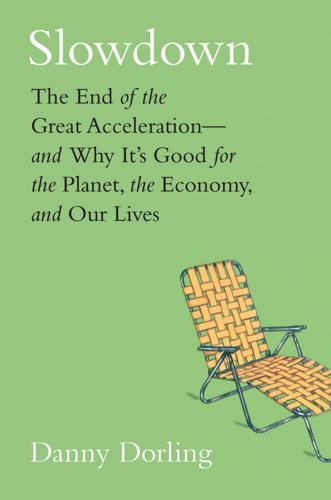
Slowdown: The End of the Great Acceleration―and Why It’s Good for the Planet, the Economy, and Our Lives
by
Danny Dorling
and
Kirsten McClure
Published 18 May 2020
The low of the 1970s that you can see in figure 35 was no longer caused by the influence of a baby boom, as we are not counting the total number of infants born, but the rate or frequency at which women were giving birth. The rate appears to stabilize around 1977 at under 1.8. It tries to settle again after 1980 at just over 1.8 children per woman. It rises in the 1980s to over 2 again during Ronald Reagan’s fabled era of “morning in America,” the period in which poverty rates and economic insecurity exploded and economic inequality raced ahead owing to the political choices of those who put him in the White House. 35. United States: total fertility rate, 1973–2016. (World Bank Open Data, fertility rate, estimates based on the 2017 UN World Population Prospects and other sources, https://data.worldbank.org/indicator/sp.dyn.tfrt.in.)
…
However, when measured in constant dollars, so that a dollar is of the same value in terms of what it can buy over time, U.S. median wages plummeted at the end of the 1970s, as figure 50 makes clear. The average U.S. worker did worse and worse. For the median full-time employee, there were falls in real income of over 4 percent and then over 3 percent a year in 1979 and 1980. Ronald Reagan proclaimed the start of his time in office “morning in America”—it turned out to be a cold and dismal morning for the majority. 50. U.S. median full-time employee weekly real earnings, 1979–2019. (Data adapted from U.S. Bureau of Labor Statistics, “Employed Full Time: Median Usual Weekly Real Earnings; Wage and Salary Workers; 16 Years and Over” [in 1982–84 CPI-adjusted dollars], retrieved from FRED, Federal Reserve Bank of St.
…
U.S. student debt growth rates have declined, and they have not declined because there are fewer younger people who could go to university, or because U.S. universities are charging less for their courses. Between 1969 and 1979, the number of degrees awarded by U.S. universities rose from 1.27 million a year to 1.73 million, or by 43 percent.2 During the next ten years to 1989, which was mostly the era of President Ronald Reagan, this number rose to 1.94 million, or by just 12 percent. In the 1990s the annual total of degrees being awarded rose to 2.38 million annually, and so by 23 percent in the decade to 1999. In the twenty-first century, the number accelerated to 3.35 million, or a rise of 41 percent, from 2000 to 2009, and to 3.55 million by 2010 and 3.74 million by 2011, but then the growth halted.

Palo Alto: A History of California, Capitalism, and the World
by
Malcolm Harris
Published 14 Feb 2023
Ethan Swift, “Young Americans for Freedom and the Anti-War Movement: Pro-War Encounters with the New Left at the Height of the Vietnam War” 2019, MSSA Kaplan Prize for Use of MSSA Collections, 42, https://elischolar.library.yale.edu/mssa_collections/19. 5. Thomas W. Evans, The Education of Ronald Reagan: The General Electric Years and the Untold Story of His Conversion to Conservatism (New York: Columbia University Press, 2006), 4. 6. Ronald Reagan, “A Time for Choosing,” campaign speech, October 27, 1964, https://www.reaganlibrary.gov/reagans/ronald-reagan/time-choosing-speech-october-27-1964. 7. J. Hoberman, Make My Day: Movie Culture in the Age of Reagan (New York: The New Press, 2019), 104. 8. “Cagney Eulogized by Reagan as ‘Success Story’ with AM-Obit-Cagney,” Associated Press, March 30, 1986. 9.
…
Department of State Historical Documents; James Warren, “Nixon on Tape Expounds on Welfare and Homosexuality,” Chicago Tribune, November 7, 1999. Chapter 4.2 War Capitalism Hoover Institution—Ronald Reagan’s Dirty Harry Situation—The Office of Technology Licensing and the Privatization of the Cold War University—Wiring the Asian-American Circuit—Computers for Dictators—Iran-Contra Net How did the relatively unimpressive actor Ronald Reagan get picked as the avatar for the new right? Who picked him? Associations of capitalists and asset holders get short shrift in the historical literature compared to labor unions, and it was the former groups that took the offensive.
…
New World Order The Reagan era—which includes Carter’s presidency as well as George Bush Sr. and, arguably, Clinton, George Bush Jr., Obama, Trump, and Biden, at the time of this writing—put America back on its narrative track. The country’s time in the sun wasn’t over; it was just beginning. “Morning in America,” as the slogan went. Economically, it made the leap from industrial to postindustrial, jettisoning midcentury labor models along with the mines, mills, and factories. If the country couldn’t beat the world market in primary materials and heavy manufacturing, then it would play to its own advantage: making shit up.

Hard Times: The Divisive Toll of the Economic Slump
by
Tom Clark
and
Anthony Heath
Published 23 Jun 2014
The FBI only began uniform crime reporting in 1930, and there were discontinuities as more cities were covered and got used to the practice. See Ryan S. Johnson, Shaun Kantor and Price V. Fishback, ‘Striking at the roots of crime: The impact of social welfare spending on crime during the Great Depression’, National Bureau of Economic Research, 2007, pp. 40–1, at: www.nber.org/papers/w12825 39. Gil Troy, Morning in America: How Ronald Reagan invented the 1980s, Princeton University Press, Princeton, NJ, 2005, p. 88. 40. Herbert Hoover's effective dismissal of relative poverty in the Depression struck a callous note, but his emphasis on absolute deprivation was not necessarily cynical; earlier in his career, he had headed Washington's efforts to feed famished Europeans during the First World War, a context in which mass starvation was a real threat.
…
Whereas in days gone by hard times had been synonymous with famine and early graves, in the United States of the 1930s many went without gasoline rather than bread, and a drop in traffic accidents actually pushed the mortality rate down.37 There was enough ambiguity in the patchy crime data from the era38 for a right-wing romantic like Ronald Reagan to be able to get away with looking back and claiming ‘we had possibly the lowest crime rate in our history at a time when poverty was most widespread’.39 And as the likes of Steinbeck's Joads were making their terrified trek from the Dustbowl to the West, there were those who said that they could not truly be poor because they were driving in trucks.
…
The heritability of joblessness, then, is hard to dispute. Unlike many of the maladies we have uncovered, there will be no need to persuade the political Right that this problem exists. Indeed, if anything the tendency is to exaggerate it – to suggest that the poor live in a parallel culture with different norms, something that Ronald Reagan implied when he summoned up the bogeywoman of the ‘Welfare Queen’ during his unsuccessful tilt for the White House in 1976.74 And in the UK of today, Work and Pensions Secretary Iain Duncan Smith has spoken of whole communities in which nobody in three generations has worked. These are overblown and misleading claims.75 They also wrongly imply that there are places so permanently downtrodden and marginalised that hard times can come and go without making much difference.

Affluenza: The All-Consuming Epidemic
by
John de Graaf
,
David Wann
,
Thomas H Naylor
and
David Horsey
Published 1 Jan 2001
Advertising separates our era from all earlier ones as little else does. —CONSERVATIVE ECONOMIST WILHELM ROPKE Any space you take in visually, anything you hear, in the future will be branded. —REGINA KELLY, DIRECTOR OF STRATEGIC PLANNING, SAATCHI AND SAATCHI ADVERTISING It’s morning in America,” announced the 1984 TV commercials for Ronald Reagan, whose message that Americans could have their cake and eat it too had overwhelmed the cautious conservationist Jimmy Carter four years earlier. And indeed, it was morning, the dawning, you might say, of the Age of Affluenza. Despite economic ups and downs, the last twenty years of the twentieth century would witness a commercial expansion unparalleled in history.
…
“Everybody felt worse compared to the role models, those at the top.” By the late ’90s, polls showed that Americans believed they needed $75,000 (for a family of four) to lead a “minimum” middle-class life. I’VE GOT MINE, JACK In the years just after World War II the super-rich sought to conceal their profligacy, but after Ronald Reagan’s first inaugural ball many began to flaunt it again. As economist Robert Frank points out, there’s been a rush on $15,000 purses, $10,000 watches, even $65 million private jets. Twenty million Americans now own big-screen TVs costing at least $2,000 each. Some buy their children $5,000 life-size reproductions of Darth Vader and $18,000 replicas of Range Rovers, $25,000 birthday parties, and million-dollar bar mitzvahs.14 Yachts the size of mansions burst their berths in many a marina.
…
Its operations are housed in palatial hillside headquarters that might embarrass the Parthenon. Inside, the feel is expensive and dynamic. Tour groups learn about Dobson’s vision for FOF, while the photographs lining the walls establish his connection to past and present Republican stalwarts, including Ronald Reagan and Newt Gingrich. Dozens of neatly dressed men and women respond to hundreds of phone callers every day, counseling them and sending out audiotapes, videotapes, and publications geared to teens, single parents, and other readers. “We get thousands of letters every week,” said Stanton when we first met him at FOF.
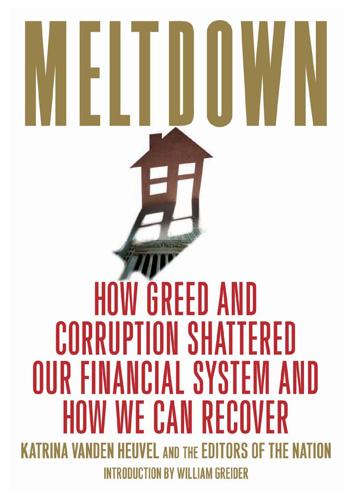
Meltdown: How Greed and Corruption Shattered Our Financial System and How We Can Recover
by
Katrina Vanden Heuvel
and
William Greider
Published 9 Jan 2009
They preferred calling their program of military expansion and tax cuts for the rich “supply-side economics.” Whatever the label, this combination generated an increase in the federal deficit of about two percentage points relative to the size of the economy at that time. In 1983 GDP rose sharply by 4.5 percent. In 1984 GDP growth accelerated to 7.2 percent, with Reagan declaring the return to “morning in America.” Unemployment fell back to 7.5 percent. In today’s economy, an economic stimulus equivalent to the 1983 Reagan program would amount to about $300 billion in spending—roughly double the size of April’s stimulus program, though in line with the high-end figures being proposed in Congress. A stimulus of this size could create nearly 6 million jobs, offsetting the job-shedding forces of the recession.
…
Until recently American politics remained mired in the cultural controversies passed down from the late sixties, with right-wing populists forever reminding “normal Americans” of the hideous world that the “establishment” had built, a place where blasphemous intellectuals violated the principles of Americanism at every opportunity, a place of crime in the streets, of unimaginable cultural depravity, of epidemic disrespect for the men in uniform, of secular humanists scheming to undermine family values and give away the Panama Canal, of judges gone soft on crime and politicians gone soft on communism. The thirty-year backlash brought us Ronald Reagan’s rollback of government power as well as Newt Gingrich’s outright shutdown of 1995. But for all its accomplishments, it never constituted a thorough endorsement of the free market or of laissez-faire politics. Barbara Ehrenreich, one of its most astute chroniclers, points out that the backlash always hinged on a particular appeal to working-class voters, some of whom were roped into the Republican coalition with talk of patriotism, culture war and family values.
…
Most of these writers properly feel that the crash was caused by a combination of all or most of these influences: deregulation to the point of anarchy; a towering secrecy that conceals the financial world from ordinary investors; greed that distorts capitalism and the character of those who administer it; a justice system that Wall Street malefactors know they need not fear; and, to personalize the problem, we are offered Alan Greenspan and his fellow conspirators, chief of whom were Clinton and his Treasury Secretary, Robert Rubin, who was a top exec at Goldman Sachs before joining Clinton’s Cabinet and a top exec at Citigroup after leaving it. In Lowenstein’s opinion, Clinton was, except for Ronald Reagan, “the most market-oriented president since the Roaring Twenties.” If the crash proved anything, it was that crime pays. Sufficient tax credits were claimed to offset the measly $1.4 billion fine that J. P. Morgan, Morgan Stanley, Merrill Lynch, Credit Suisse First Boston, Citigroup, Goldman Sachs and four others agreed to fork over for misdeeds that, as Stiglitz says, “put most acts of political crookedness to shame. ...

The Authoritarian Moment: How the Left Weaponized America's Institutions Against Dissent
by
Ben Shapiro
Published 26 Jul 2021
Obama won because he held together a heavily minority-based, low-income coalition: 93 percent of black voters, 71 percent of Hispanic voters, 73 percent of Asian voters, 55 percent of female voters, 76 percent of LGBT voters, 63 percent of those making below $30,000 per year, and 57 percent of those making between $30,000 and $50,000 per year.2 Obama became the first president since FDR in 1944 to drop electoral and popular vote support and win reelection anyway. The story of Obama’s 2012 victory is the story of the transformation of American politics. In 2008, Obama had been a different sort of candidate running a quite familiar campaign: a campaign of unification. Ronald Reagan had run on “morning in America”; Bill Clinton had run on a “third way” eschewing partisanship; George W. Bush had run on “compassionate conservatism”; Obama ran on the terms “hope” and “change,” pledging to move beyond America as a collection of “red states and blue states” and instead to unite Americans more broadly.
…
Obama had barely gotten his head above water in the approval ratings by the time of the election, the economy had stagnated (in the two quarters just prior to the election, the gross domestic product had grown just 1.3 percent and 2.0 percent)1, and Obama had performed in mediocre fashion in the presidential debates. Nonetheless, he became the first president since Ronald Reagan to win two elections with a majority of the popular vote. So, what did Obama do to work this magic? He put together a different sort of coalition. Obama won because he held together a heavily minority-based, low-income coalition: 93 percent of black voters, 71 percent of Hispanic voters, 73 percent of Asian voters, 55 percent of female voters, 76 percent of LGBT voters, 63 percent of those making below $30,000 per year, and 57 percent of those making between $30,000 and $50,000 per year.2 Obama became the first president since FDR in 1944 to drop electoral and popular vote support and win reelection anyway.
…
Government promised educational opportunity; it offered instead forced busing and lowered public schooling standards.14 This was a bipartisan affair—former conservative Richard Nixon, as president, re-enshrined LBJ’s economic programs, including unmooring the American dollar from the value of gold and setting prices, wages, salaries, and rents.15 And once again, as with FDR’s response to the Great Depression, economic stagnation set in, with the percentage of people living in poverty stopping its decrease in 1970 and the stock market topping out in January 1966 around 8,000 . . . and dropping steadily until July 1982 in inflation-adjusted terms.16 By the end of the Jimmy Carter presidency, America had fallen out of love with the utopian government schemes. The Utopian Impulse had waned. “Fixing the world” through government measures had been reduced to gas lines, inflation, unemployment, and a president bemoaning an American malaise, admitting that “all the legislation in the world can’t fix what’s wrong with America.”17 Ronald Reagan took up that baton, declaiming in his First Inaugural Address, “government is not the solution to our problem; government is the problem. . . . It is time to check and reverse the growth of government which shows signs of having grown beyond the consent of the governed.”18 In reality, Reagan didn’t reduce the size and scope of government—government continued to grow.

Seven Crashes: The Economic Crises That Shaped Globalization
by
Harold James
Published 15 Jan 2023
The report was titled “The Judgment of Paris.”44 Learning is always more difficult for hegemonic countries. Paul Krugman liked to comment that “as a nation we are often unwilling to learn from foreign experience.”45 The 1970s made that process a necessity. But it helped in that process to package learning in an optimistic envelope. Ronald Reagan preached about “morning in America,” Margaret Thatcher explained (while still in opposition) that “we don’t want pessimists in our party.”46 Thus, crises in the 1970s led to the same realization as in the 1840s: openness produced resilience, and financing needed to be available for trade to expand. The eventual impact was obvious: trade in goods, which in 1970 had amounted to 9.5 percent of global GDP, increased to 14.9 percent by 1980.
…
The erosion of our confidence in the future is threatening to destroy the social and the political fabric of America.”23 The initial reaction to this speech was enthusiastic, and opinion polls showed a widespread appreciation of the frank reckoning. Once the dust settled, however, the frank avowal defined Carter as a leader who had lost control. And that was the theme that dominated the 1980 presidential campaign, with many holding up “ABC” signs: Anyone But Carter. The eventual Republican challenger, Ronald Reagan, made very effective use of the “malaise” theme. Inflation provided the key to the indictment—it had reached 18 percent at the beginning of 1980, as Reagan pointed out in a decisive televised debate with Carter: “he has blamed the people for inflation, OPEC, he has blamed the Federal Reserve system, he has blamed the lack of productivity of the American people, he has then accused the people of living too well and that we must share in scarcity, we must sacrifice and get used to doing with less.
…
In the end, no country in which inflation had become embedded seemed able to moderate that inflation without a painful transitional period of high unemployment, recession, and profit squeeze.”32 Volcker became disenchanted with the monetary targeting exercise, especially as the Carter administration ground to a debilitating close and Ronald Reagan won the November 1980 election. In November, the central banker lamented: I think what we are seeing now in general terms is the famous collision between the recovery and monetary targets that are in some sense too restrictive to permit recovery unless the momentum of inflation declines. I didn’t expect to reach [this stage] this early, but here it is.

Who Are We—And Should It Matter in the 21st Century?
by
Gary Younge
Published 27 Jun 2011
“Here’s what you need to do: Have someone write you a lovely speech that stakes out popular positions in unwavering language and less popular positions in fuzzier terms. Better yet if it bows to God and country at every turn—that’s called uplift. Make it rife with optimism, a trumpet blast not just about morning in America but about a perpetual dazzling dawn. Avoid talk of hard choices and daunting challenges; nobody wants those. Nod to people on all points of the political spectrum ... Add a soupçon of alliteration. Sprinkle with a few personal observations or stories—it humanizes you. Stir with enthusiasm.” For a white, male, straight, married candidate with access to several million dollars, this advice would work well.
…
iv. 1984–5: Clapham Between my first kiss and my first A level, there was Trotsky. I am sure I would have met him sooner or later, plastered against the wall in a Student Union bar, or on a street corner hiding behind a petition. But he came to me on a sunny day in Hyde Park. It was 1984; the year of the miners’ strike, the IRA bombing of the Grand Hotel in Brighton and Ronald Reagan’s second victory in the US presidential elections. I was fifteen, a self-important teenage vegetarian who felt that all was not quite right with the world. I had spent most of the day wandering around London alone, protesting against the visit of the South African president, P. W. Botha, when a young man with acne caught me unawares and offered me a copy of Young Socialist.
…
Mr Sessions went on to insist that Sotomayor’s statement went “against the American ideal and oath that a judge takes to be fair to every party. And every day when they put on that robe, that is a symbol that they’re to put aside their personal biases and prejudices.” Sessions knew a thing or two about personal biases. When Ronald Reagan nominated him to be a judge on the District Court for the southern district of Alabama, four Department of Justice lawyers who had worked with him testified that he had made racist statements. As an assistant attorney, he had branded a white civil rights lawyer who concentrated on voting-rights cases a “disgrace to his race” and described the nation’s oldest civil rights organization, the National Association for the Advancement of Colored People (NAACP) as “un-American” and a “Communist inspired” body that “forced civil rights down the throats of people.”
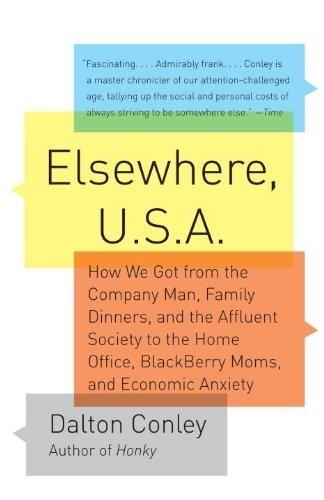
Elsewhere, U.S.A: How We Got From the Company Man, Family Dinners, and the Affluent Society to the Home Office, BlackBerry Moms,and Economic Anxiety
by
Dalton Conley
Published 27 Dec 2008
In the case of giving money to so-called not-for-profit broadcasters, corporations are seeking to buy credibility and moral stature. In the case of cause marketing, they are doing that while directly trying to increase sales by pressing the moral pressure point on the soft, guilt-ridden underside of the American consumer. American Express presaged Ronald Reagan’s “Morning in America” 1984 campaign message by promising that for every purchase made with the charge card, the company would donate one penny to the fund supporting the restoration of the Statue of Liberty (never mind the implications of the fact that we needed to go begging in the private sector to take care of something that was government property—this was the Reagan administration, after all).
…
Computers and telecommunications technologies have allowed for private equity managers to make tens of millions of dollars through international arbitrage while sitting in their pajamas in Westport, Connecticut (also known as “Northern Hedg-istan” to financial industry insiders). As much as the left likes to blame Ronald Reagan (and the two Bushes) for the steady rise in income inequality, much of it had to do with computer technology. And then there are the second-order effects of rising inequality on the economy. Paradoxically, the fastest-growing number of jobs in the first decade of the third millennium is projected to be in food preparation and service.38 Computers were supposed to eliminate low-skilled jobs and create high-skilled ones.
…
And then there is the rise of the “family foundation”: 40,000 of them9 helping to contribute to the fact that the United States enjoys $240 billion of private giving each year.10 Our donations approach 2 percent of GDP, and given the size of our economy, in raw dollar amounts we give more than the next thirteen countries combined.11 Of course, keeping in line with its moral function, most of this goes to churches. We must never forget the spiritual dimensions of the economic system. 1∗Of course, we can’t just blame Ronald Reagan. In the last Gilded Age of staggering inequality (ca. 1885), insufficient funds were appropriated for the construction of the pedestal on which the French gift—Lady Liberty—would stand. The newspaper magnate Joseph Pulitzer used his editorial pages to shame America’s rich folks into donating more money to support the effort.
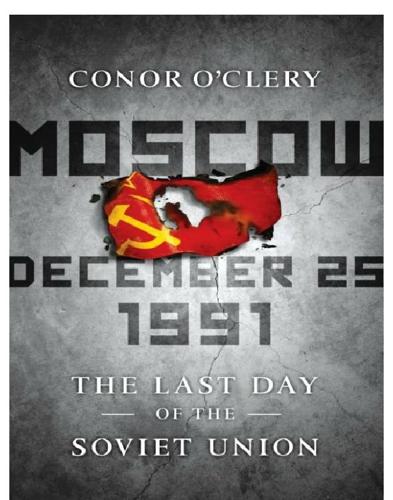
Moscow, December 25th, 1991
by
Conor O'Clery
Published 31 Jul 2011
In May, accompanied by Raisa, their daughter, Irina, and interpreter Pavel Palazchenko, Gorbachev also travels to the United States, on a trip cohosted by Ronald Reagan and George Shultz and organized by his American admirer Jim Garrison, and is once more able to drink in the intoxicating brew of celebrity adulation and peer worship so lacking at home.7 The wealthy publisher Malcolm Forbes Jr. puts his private jet, named Capitalist Tool, at Gorbachev’s disposal to fly the party around eleven American cities, where they are accommodated in five-star hotels and greeted by fawning hosts, among them Donald Trump, Ronald Reagan, and David Rockefeller. Twenty thousand people come to hear Gorbachev speak in Fulton, Missouri, the location of Winston Churchill’s “Iron Curtain” speech.
…
Collins gives him the number in Washington of the State Department operations desk, which Palazchenko calls on an open line through the Moscow operator. At the State Department, the duty officer advises him that President Bush is spending Christmas Day at Camp David. He patches Palazchenko through to the marine on duty at the forest retreat. The U.S. president is still asleep—it is early morning in America—but the officer says Bush will take the call after he wakes up. They fix a time for the connection: 5 p.m. in Moscow, 9 a.m. in Washington.4 Fully recovered from his after-lunch bout of depression, Gorbachev invites Ted Koppel and Rick Kaplan into his office to continue filming their historical record for ABC television.
…
The recipients comprise an A list of current and former world leaders whom he has met and befriended during his years in office: George H. W. Bush, Helmut Kohl, François Mitterrand, John Major, Giulio Andreotti, Bria n Mulroney, King Juan Carlos and Queen Sofia of Spain, Lech Walesa, Vaclav Havel, Ronald Reagan, Margaret Thatcher, and the heads of the governments of Korea, Finland, Egypt, Syria, Israel, Iran, and Norway. Gorbachev has worked hard to get the tone and content of the letters right. The warm relationship with his counterparts abroad is most important to the Soviet president. It is a measure of his international standing, a recognition of what he has achieved in reforming the Soviet Union, and an assurance of global approval for lessening world tensions, reversing the nuclear arms race, allowing the Berlin Wall to fall, and letting Eastern European countries have their freedom.
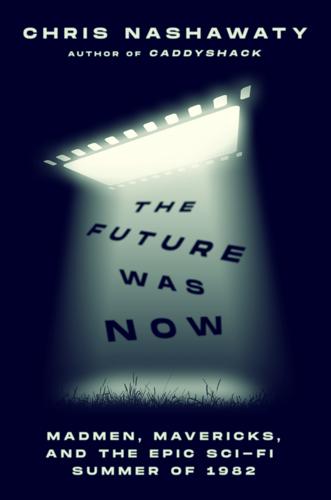
The Future Was Now: Madmen, Mavericks, and the Epic Sci-Fi Summer Of 1982
by
Chris Nashawaty
Hershey, the company that had allowed its Reese’s Pieces to be used in E.T., saw sales of its candy-coated peanut butter treats soar by 65 percent. The movie’s most iconic image—of ten-year-old Elliott flying on his bicycle through the moonlit sky—was everywhere, including a new ride planned for Universal Studios. On June 27, President Reagan, who was still two years away from delivering his optimistic “Morning in America” speech to the nation, invited the director to show E.T. in the White House screening room. Recalled Spielberg afterward, “Nancy Reagan was crying toward the end and the President looked like a ten-year-old kid.” And it wasn’t just critics and commanders in chief who were fans of the film.
…
Poltergeist was meant to be both a clearinghouse for all the things that go bump in the night that had haunted Spielberg as a kid (like a tree outside his bedroom window whose branches looked like hands stretching out in agony) and also a sly meditation on the conformity of the sort of suburban idyll in which he’d grown up rather unhappily (the film’s parents are weed-smoking former hippies who have a biography of Ronald Reagan on the nightstand). “At that time, my main religion was suburbia,” says Spielberg of his films of the ’80s. “The families all getting together, nobody gets divorced, nobody’s unhappy with each other. And of course, it’s all false.” Spielberg would work closely with Grais and Victor shaping the Poltergeist script, although he initially downplayed his contribution, concerned that he might get into hot water with the unions.
…
“E.T. became this huge sensational hit,” recalls Carpenter. “And its message was the exact opposite of The Thing. As Steven said at the time, ‘I thought that the audience needed an uplifting cry.’ And boy, was he right! It just shows what an astute businessman he is. He knew what the audience needed at that moment.” With Ronald Reagan in the White House peddling optimism and promising better times ahead, Carpenter knew that his movie couldn’t be coming out at a worse moment. People wanted light, not dark. They wanted hope, not despair. They wanted cuddly, Reese’s Pieces–eating aliens, not terrifying, gut-rending ones. But all Carpenter could do now was sit back and await the jury in the relentless summer heat of Los Angeles.

Democracy Incorporated
by
Sheldon S. Wolin
Published 7 Apr 2008
—Thomas Jefferson1 America, the world’s first land of opportunity to become a democrat . . . —SSW Morning/Mourning in America —SSW . . . a mourning over the failure of a project that nonetheless cannot be relinquished. —Jürgen Habermas2 Any prospect of revitalizing democracy in America should not assume that we can start afresh. It is not morning in America. The first step should be to reflect on the changes of the past half century that have distorted the cultural supports of democracy and eroded its political practices while preparing the way for a politics and political culture favorable to inverted totalitarianism. Inverted totalitarianism marks a political moment when corporate power finally sheds its identification as a purely economic phenomenon, confined primarily to a domestic domain of “private enterprise,” and evolves into a globalizing copartnership with the state: a double transmutation, of corporation and state.
…
Incorporation need not always require, for example, that corporate representatives sit on review committees that judge new drugs or gather in the office of the vice president to consult on energy policies. Power is typically exercised in a context where the participants know their cues. Recently a major television network withdrew a program dealing with Ronald Reagan after the Republican National Committee protested a scene where the former president was portrayed as less than inclusive about homosexuals.21 This surrender occurred at the precise moment when the Republican-dominated Federal Communications Commission was promoting greater concentration of media ownership and, in the process, ignoring an unprecedented outcry from thousands of citizens.
…
In the narrative of the political archaist the United States was blessed with a once-and-for-all-time, fixed ideal form, an original Constitution of government created by the Founding Fathers in 1787. In that view, the original Constitution is the political counterpart to the Bible, the fundamental text, inerrant, unchanging, to be applied—not “interpreted” by “activist judges.” As the political fundamentalists see it, except for the Edenic era of Ronald Reagan, the form of government decreed by the Constitution has been under siege by “the liberal media” and liberal administrations abetted by their minions in Congress and by judges who “legislate” instead of “following the letter” of constitutional scripture. The nation is perceived as a wayward sinner who frequently wanders from the straight and narrow and needs to be sobered, returned to its sacred text, its Word.
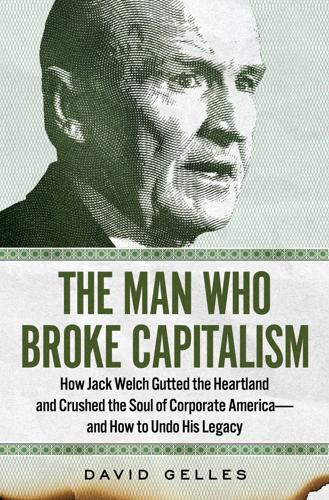
The Man Who Broke Capitalism: How Jack Welch Gutted the Heartland and Crushed the Soul of Corporate America—and How to Undo His Legacy
by
David Gelles
Published 30 May 2022
Then in 1982, the Securities and Exchange Commission blessed a change to the law that gave companies the green light to start buying back their own stock. It was another gift from the Reagan administration to the business community. Rather than invest in new products and services, or their employees, companies could now use their profits to simply repurchase their own shares, driving their stock price up. It was morning in America, and a new era of stock market gamesmanship was dawning. Welch seized on this opportunity, and he would go on to announce what was at the time the largest stock buyback program in the history of American business—some $10 billion in share repurchases. It was his down payment on a strategy that would push GE shares ever higher.
…
Culturally, politically, and economically, the previous decade had offered up a series of indignities that seemed to question the premise of American exceptionalism. The Vietnam War raged and Richard Nixon resigned. The stock market was flat and inflation was on the rise. Across the country, there was a sense of pervasive dissatisfaction, and an accompanying conviction that something had to change dramatically. In November, Ronald Reagan—who worked as a pitch man for GE before entering politics—beat Jimmy Carter in a landslide, becoming the fortieth president of the United States with the slogan “Let’s Make America Great Again.” The new president’s economic policy, known as Reaganomics, prioritized lower taxes, decreased regulation, and a favorable posture toward Wall Street, a combination that would benefit corporations while marginalizing workers.
…
What was good for the corporation was good for the country, and vice versa. In 1960, the year Welch joined GE, the company’s slogan was “Progress Is Our Most Important Product.” It was a line repeated on every Sunday night installment of General Electric Theater, the mainstay television review hosted by Ronald Reagan, then merely an actor. In subsequent years, GE’s slogan became “Accent on Value.” And then in the 1970s, Jones introduced the phrase, “We Bring Good Things to Life.” It wasn’t just talk. Under Jones, the company invested 10 percent of its profits into research and development, spending heavily in a bid to invent more good things.
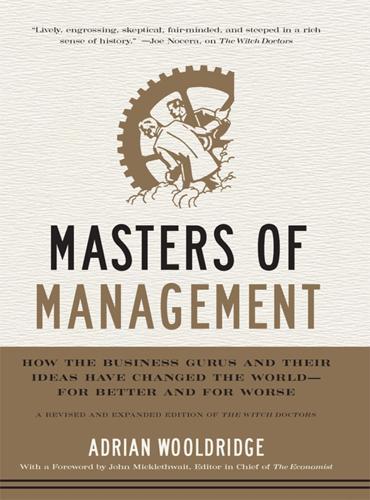
Masters of Management: How the Business Gurus and Their Ideas Have Changed the World—for Better and for Worse
by
Adrian Wooldridge
Published 29 Nov 2011
Like many other pundits, Peters and Waterman agreed that American managers bore much of the blame for their country’s plight, thanks to their obsession with the short term and their indifference to quality and service.3 However, they argued that Americans did not have to look all the way to Japan for models of how to run excellent companies and revive national competitiveness. America possessed more than its share of companies that were producing new products, pioneering new processes, and working overtime to satisfy all their constituents—customers, employees, shareholders, and the public at large.4 Peters and Waterman sounded the “morning in America” theme two years before Ronald Reagan used it to seal his reelection. And, like “the great communicator,” they argued that there was nothing wrong with America that could not be cured by what was right with America. Management theory had met American patriotism. Peters also made the case for humanistic management: the good news that they had discovered across the country all resulted from treating people decently and asking them to shine, rather than treating them as merely factors of production; from producing things that people actually wanted, rather than just hitting the numbers.
…
(Anybody who accuses Drucker in print of being a fan of big companies is in for a long letter, chronicling his enthusiasm for decentralization.) All the same, Drucker seemed more at home with the giant corporations that dominated the United States under Dwight Eisenhower than with the small to medium-size businesses that regalvanized the country under Ronald Reagan. He wrote nothing as good as The Concept of the Corporation about a small company. This is odd, given his history and personality. This prophet of the “age of organizations” was a quintessential individualist who was happiest ploughing his own furrow (one of his favorite sayings was “one either meets or one works”).
…
Fast Company calls him “a rock star, a spiritual leader, a stud.”6 New York magazine calls him a “Geek pop star.”7 Stephen Gaghan, the screenwriter of Traffic and Syriana, is writing a film based on his second book, Blink (2005). Gladwell followed a more circuitous route into journalism than Friedman. The sprig of a liberal academic family—he was born in Britain and brought up in Canada—Gladwell was a rebel-inreverse: he embraced conservatism as a teenager and even put up a poster of Ronald Reagan on his wall at the University of Toronto, a gesture that must have required considerable courage. His first job in journalism was with the Clinton-bashing American Spectator. He could easily have become lost in the echo chamber of right-wing journalism, perhaps joining the National Review, the ultimate journalistic dead end, and devoting himself to defending the true religion from various apostates.
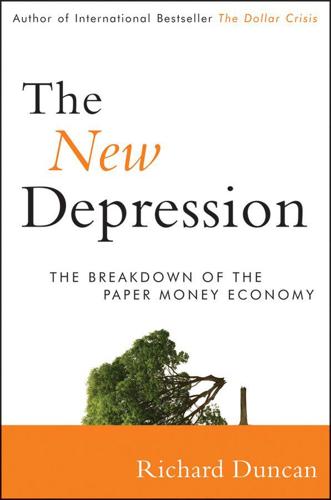
The New Depression: The Breakdown of the Paper Money Economy
by
Richard Duncan
Published 2 Apr 2012
As a result, the annual budget deficit averaged 4.8 percent of GDP over those years, producing a cumulative budget deficit of $976 billion. It was government debt that caused total debt to expand; there is no way to argue that economic growth caused an increase in government debt. It was very clearly the other way around: government debt caused the economy to expand. Government debt powered Reagan’s “Morning in America” economic rebound. This is a lesson that his devotees in the Tea Party need to learn. While Reagan was president, the government debt held by the public increased from $712 billion to $2,052 billion, or by 188 percent. Although the Gipper said that “Government is the problem,” he used government debt as the solution.
…
Where are the visionaries with brilliant ideas that will postpone that day of reckoning, push it back for a few more years, for a decade or—dare we hope—actually generate a plan that cheats fate by devising a strategy to allow us to use the resources at our disposal to invest our way back to solvency? The business community has put forward no bold initiatives. The Republicans—after having expanded the national debt by 188 percent under President Ronald Reagan and 77 percent more under President George W. Bush—have recently found their old-time religion and are determined to cut government spending now—at a time when only government spending is keeping the economy afloat. The Democrats have no discernible ideas at all. President Barack Obama relied too heavily on the advice of many of those responsible for causing the crisis and has no contingency plan to implement now that the second down leg of the collapse has begun.
…
It followed the heavy government deficit spending of the 1960s, which had forced the abandonment of gold backing for the dollar in 1968 and resulted in the breakdown of the Bretton Woods system in 1971. Fed Chairman Paul Volcker crushed that round of inflation with very high interest rates in 1981. A sixth round of high inflation should have occurred a few years later as the result of President Ronald Reagan’s deficit-funded spending spree. That did not happen, however, because the United States began incurring very large trade deficits with other countries. In all the previous inflationary periods, excessive government spending had created domestic bottlenecks in industrial production and labor shortages; and those factors combined to generate wage-push inflation.
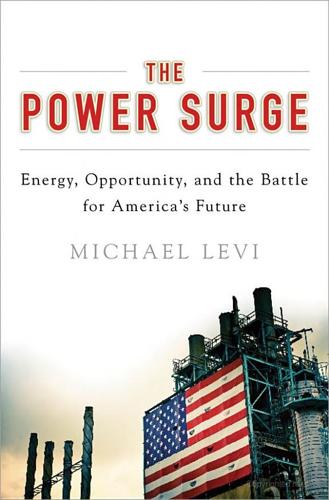
The Power Surge: Energy, Opportunity, and the Battle for America's Future
by
Michael Levi
Published 28 Apr 2013
Carter has led us to believe that there is an acute shortage of energy resources in this country,” explaining that “the truth is, America has an abundance of energy.”24 Perhaps this was based on a detailed assessment of U.S. resources (the campaign regularly cited statistics for U.S. reserves of oil, gas, and coal), though Reagan’s frequent claim—firmly detached from reality—that Alaska held more oil than Saudi Arabia suggested something else was at work, too. The Gipper had no plans to don a sweater and turn down his thermostat. Four years before “Morning in America,” the intended contrast between optimism and pessimism was clear. Some of Reagan’s description of his opponents was caricature, but much of it was on target, particularly when it came to the left wing of the Democratic party, which did not trust markets much. Ted Kennedy, the liberal standard bearer in the 1980 Democratic primary, “proposed an energy program based on massive conservation, renewable resources, limited synthetic fuel production and Federal funds for [switching oilfired power plants to run on coal].”25 He called for “new controls on oil prices . . . to protect the poor and average income consumer,” “gasoline rationing,” and “a moritorium [sic] on the construction and operation of nuclear power plants.”26 Behind this, in part, was an argument about equity: the Carter administration, a Kennedy pamphlet charged, had “created a scale of unequal sacrifice based on unfair prices that would bring hardship to ordinary people.”27 The Kennedy plan also had roots in distrust of big business, something most Americans shared, at least when oil companies were concerned.
…
New environmental threats also figured prominently: a massive oil spill off the coast of Santa Barbara galvanized the environmental movement in 1969, and the 1972 book The Limits to Growth, which would sell millions of copies, warned that the world would quickly run out of natural THE BATTLE FOR THE FUTURE OF AMERICAN ENERGY • 11 resources unless something changed. It would have been tough enough to cope with a rapidly shifting energy scene. Doing it amidst such sweeping change and uncertainty made the task far more difficult. The battle reached its peak in the 1980 presidential race between Jimmy Carter and Ronald Reagan. Hans Landsberg, writing for the New York Times less than a month before the election, captured what was happening. “For the last few years,” he wrote, “this country ostensibly has debated energy policy but in reality has been engaged in a fierce, prolonged bout of soul-searching.” Energy was no longer being discussed on its own merits but was now symbolic: “It can be argued that energy was tailor-made to become the arena for the clash of opinions that, to be sure, are related to energy but for which energy is at best a proxy.”20 Landsberg, then an economist at a think tank named Resources for the Future, was trying to play the straight man in this debate.
…
Solar Energy Development (Boston: South End Press, 1979), 102–103. 19. Ibid., 102. 20. Hans H. Landsberg, “Battling on Energy,” New York Times, October 6, 1980. 21. David Stockman, The Triumph of Politics: How the Reagan Revolution Failed (New York: Harper and Row, 1986), 61. 22. Ibid., 38. 23. Ronald Reagan, “Whatever Happened to Free Enterprise?” Imprimis, January 1978. 24. Douglas E. Kneeland, “Reagan Charges Carter Misleads U.S. on Threat to Energy Security; Record on Blacks Cited Sees No Energy Shortage,” New York Times, September 11, 1980. 25. Steven Rattner, “Kennedy Urges Energy Plan Based on Liberal Ideas; Adviser Opposed to Controls Cost on Coal Conversion Based on Driver’s Licenses Controls Likely to Continue,” New York Times, February 3, 1980. 26.
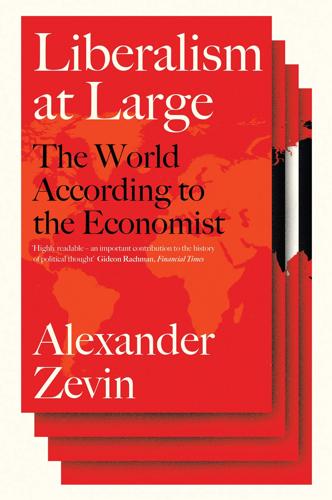
Liberalism at Large: The World According to the Economist
by
Alex Zevin
Published 12 Nov 2019
Inflation shot up, unemployment climbed above a million, and growth fell to a post-war low. The ‘winter of discontent’ ended in a narrow election win for the Conservatives under Margaret Thatcher – who campaigned on the promise that monetarist medicine could cure the economy of inflation by restricting the money supply. Ronald Reagan captured the White House in 1980, with similar plans to restore ‘morning in America’, as the swing to the right picked up speed across the OECD. Here the Economist hesitated, with the newsroom divided about the best – the most liberal – solution to the crisis. While Thatcher’s program of lower direct taxes, smaller government and weaker trade unions was precisely what the paper wanted, that was not ‘reason by itself to vote for her’ in 1979.
…
‘Never has so much been read for so long by so few,’ quipped another editor, riffing on Winston Churchill.18 In the second half of the twentieth century, the Economist reached across the Atlantic: the role it once played in the British Empire, it now undertook in the American. A literal bridge between them, star reporters now passed apprenticeships on Wall Street and in Washington, where they enjoyed special access from the start – collared by John F. Kennedy or Lyndon B. Johnson in the marble corridors of Congress, enjoying personal lines to Ronald Reagan’s White House via George Shultz, Henry Kissinger and other pillars of the foreign-policy establishment. The intimacy of its advocacy of US hegemony, all the more powerful for coming from a global rather than merely national point of view within the US, is one reason why a new history of the Economist is needed, and American readers have cause to be interested in it.
…
Disputes between interwar editor Walter Layton and John Maynard Keynes over the gold standard and how to respond to the Depression presage Britain’s global decline and the passing of the imperial sceptre to the United States. After the paper’s turn to America during the Second World War came an all-out commitment to Washington as the Cold War escalated, a fealty consummated in the eras of Ronald Reagan and George W. Bush. Moving into the present, the story ends with what is now – rightly or wrongly – widely perceived as the contemporary crisis of liberalism, and looks at the ways the Economist has contributed to and tried to surmount it. In doing so, it pulls back to survey the long history of liberalism according to the Economist, and lays out a counter-narrative to which its actual record points.
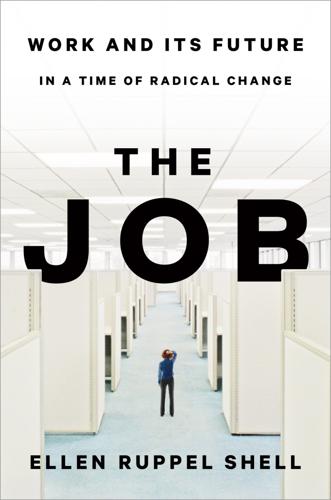
The Job: The Future of Work in the Modern Era
by
Ellen Ruppel Shell
Published 22 Oct 2018
Indeed, other than gas stations, new- and used-vehicle dealers, and grocery and liquor stores, brick-and-mortar retail is slipping, while e-commerce soars. E-commerce, it seems, represents the future. So it was perhaps unsurprising that President Barack Obama delivered his stirring July 2013 “Morning in America”–style jobs speech at a cavernous Amazon distribution center in Chattanooga, Tennessee. Like Worchester and so many small American cities, Chattanooga was once a booming factory town; its central location, easy access to roads and rails, and willing workforce made it an extremely popular manufacturing base.
…
I didn’t exactly transform into Tiger Mom, but I did caution Alison that while helping other kids was nice, looking out for her own interests was smart. And she needed to be smart. I know I was wrong to let fear trump my daughter’s inclinations and my own values. But it’s easy to forget that back then, in the mid-1990s, the nation itself was afraid. A decade earlier President Ronald Reagan’s National Commission on Excellence in Education had sounded the alarm: “Our nation is at risk because our once unchallenged preeminence in commerce, industry, science and technological innovation is being overtaken by competitors throughout the world.” Pretty frightening. The perceived threat came mostly from Japan, then an economic and technological juggernaut.
…
Drug testing of employees has its roots in the experience of the world’s largest employer, the US Department of Defense. In 1980, 27 percent of surveyed military personnel admitted to illicit drug use in the previous month. This alarming finding prompted the military to start testing, and five years later illicit drug use by DOD employees dropped to 9 percent. This success moved President Ronald Reagan to sign the 1986 Drug-Free Workplace Act, requiring that all federal employees refrain from illicit drug use both on and off the job, and mandating testing to make sure they did. By the mid-1990s tests were routine at more than 80 percent of all US companies. When illicit drug use started to decline through the early 2000s, workplace testing declined with it—only to rise again in the early 2010s.

Jihad vs. McWorld: Terrorism's Challenge to Democracy
by
Benjamin Barber
Published 20 Apr 2010
Pay TV and satellite television has paid little attention, however, and while the measure survived the 1993 GATT round it will eventually yield to market forces via satellite or home video or other new technologies. The time is not so far off when there will be one single image—an American image of America, something like Ronald Reagan’s opening shot in his celebrated It’s Morning in America video, or a burger sizzling on the desert-baked enamel of a Chevy V-8—an image so generic, so affecting, so ubiquitous, and so empty that it will no longer be recognized as American, it will just be.16 The dismal story of film in Europe can be duplicated over and over again around the world.
…
Aside from its technological infeasibility—if we cannot keep terrorists off airplanes or individual “sleepers” from engaging in biological and chemical warfare, how can we imagine that we can intercept multiple warheads and their multiplying decoys without a hitch?—the missile shield once again isolates America from a world it ought to participate in in changing. In Ronald Reagan’s vivid fantasies that resonated so powerfully with the American public, a virtual bubble would envelop the good nation and keep it safe from foreign nightmares. But the nightmares have come to our shores in the bright light of morning, and there is no shield against their terror except a confrontation with Jihad’s complex global genealogy.
…
Indeed, distinctions of every kind are fudged: ABC places its news and sports departments under a single corporate division; television newsmagazines blend into entertainment programs, creating new teletabloids that (in the new parlance) are reality-challenged; films parade corporate logos (for a price), presidents play themselves in films (President Ford in a television special), while dethroned governors (Cuomo and Richards) do Super Bowl commercials for snack food in which they joke about their electoral defeat, Hollywood stars run for office (Sonny Bono, no Ronald Reagan, was elected to Congress in 1994), and television pundits become practicing politicians (David Gergen and Pat Buchanan have crossed and recrossed the street to only mild chastisement from peers). Politicians can do no right, celebrities can do no wrong—homocide included. Nothing is quite what it seems.
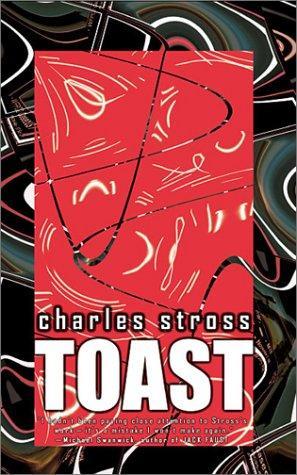
Toast
by
Stross, Charles
Published 1 Jan 2002
“Sure, professor,” I said, waving for the waiter. “That’s, like, one of my life’s ambitions.” She unwound a bit. “What’s the other?” I grinned widely. “To fuck Ronald Reagan.” While I was waiting for the call from the Hawking Institute I crashed out in front of the video, reading graphic novels and scanning reruns of twentieth century docudramas. The condenser burbled in the makeshift fume cupboard I’d built in the bathroom and the gene-spinners clicked intermittently as I soaked up Ronald Reagan, Margaret Thatcher, Leonid Brezhnev. Creatures of another era, when the universe was just about beginning to fill up and society was teetering on the edge of a baroque tomorrow; fascinating cut-outs in a past that was truly another country.
…
Roger’s spent the past five hours staring at this twenty page report, trying to think of a way of summarizing their drily quantifiable terror in words that will give the reader power over them, the power to think the unthinkable: but it’s proving difficult. The new man in the White House is straight-talking, demands straight answers. He’s pious enough not to believe in the supernatural, confident enough that just listening to one of his speeches is an uplifting experience if you can close your eyes and believe in morning in America. There is probably no way of explaining Project Koschei, or XK-PLUTO, or MK-NIGHTMARE, or the gates, without watering them down into just another weapons system—which they are not. Weapons may have deadly or hideous effects, but they acquire moral character from the actions of those who use them.

Randomistas: How Radical Researchers Changed Our World
by
Andrew Leigh
Published 14 Sep 2018
By contrast with product commercials, at least political advertisements have a measurable impact.9 But the fact that the effect has disappeared a week after seeing the ad is a reminder that few ads are memorable. The history of political advertising has produced a handful of famous advertisements – such as Ronald Reagan’s ‘Morning in America’ segment, or the attack ad on Michael Dukakis for releasing Willie Horton from jail – but they are the exception. Most political advertising – like Rick Perry’s riff on Texan pride – is pretty forgettable. The Perry study suggests that a last-minute television blitz would indeed increase a candidate’s share of the vote.
…
Yet a randomised evaluation showed that this had nothing to do with the program: men in the control group were just as likely to get jobs as men in the treatment group. It took randomisation to reveal the truth. Gueron was ‘hooked . . . on the beauty and power of an experiment’.20 Throughout the 1980s and ’90s, Gueron worked with state and local agencies across the United States. These were controversial times for welfare policy. Ronald Reagan had told his campaign rallies the story of a ‘Cadillac-driving welfare queen’: an African-American woman who defrauded the welfare system.21 Critics claimed that forcing welfare recipients into low-paid jobs was ‘modern-day slavery’. Bill Clinton ran for president on a pledge to ‘end welfare as we know it’.
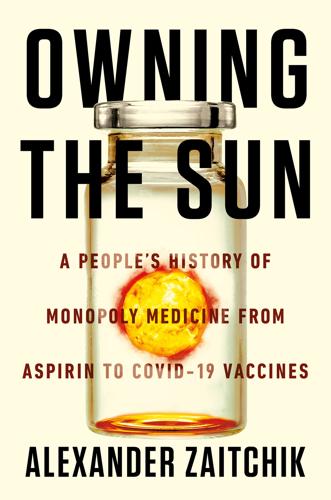
Owning the Sun
by
Alexander Zaitchik
Published 7 Jan 2022
Under the influence of the New Left, the counterculture, and the early environmental movement, the starry vistas of the Endless Frontier became crowded in the public mind with cancer-causing pollution, petroleum-jelly explosives, and research contracts for next-generation nuclear warheads. This suspicion of what Marxist and counterculture critics called technological rationality was among the targets Republican operatives had in mind when they attacked the “malaise” of the later Carter years. That the techno-optimism current running through Reagan’s “morning in America” was represented by Silicon Valley, an offspring of the counterculture, is not without irony. The emergent high-tech industries of the 1980s fed on the same military programs and foreign policies that informed the science skepticism of the 1970s.36 The historic arms buildup of Reagan’s first term pushed annual R&D spending past $86 billion in 1983, more than Europe and Japan combined.
…
When McClellan’s bill stalled in the House, the industry had five years before Nixon’s election to think about what a truly pro-industry patent policy might look like. Such a policy would be partially realized in the waning days of the Carter administration, before being fashioned into the stuff of drug industry dreams under Ronald Reagan. The midwives of this policy shift would perform burial rites over the Kennedy policy and the broader New Deal vision for public science. They would do so with a swagger born of a victory more momentous than the rollback of any law or decades-old executive order. They would do so as emissaries fulfilling an audacious intellectual project with roots deeper than the Kennedy policy and the New Deal itself.
…
After clearing out his desk in Bayh’s office, Joe Allen briefly served as executive director of the Intellectual Property Owners, Inc., a lobby group, before returning to government to help Forman oversee the implementation of Bayh-Dole in the department’s Office of Science and Technology Policy. The position also reunited Allen with Norman Latker, back in federal employ as director of the department’s patent office. The trio was effectively in charge of overseeing the implementation and expansion of Bayh-Dole, and on their recommendation, Ronald Reagan signed an executive order in 1983 that expanded the law to include corporations of all sizes. (The bill was officially amended to fit Reagan’s memo in 1984.) Having served its temporary purpose, Bayh-Dole’s stage-prop halo was removed and tossed out the window. The tradition that ended with Bayh-Dole—public science under public control—survived as long as it did because its champions understood that a democratic patent policy has political and economic spillover effects.
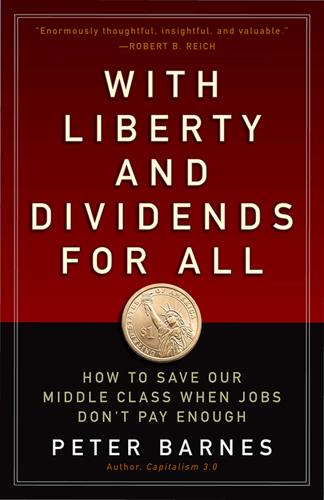
With Liberty and Dividends for All: How to Save Our Middle Class When Jobs Don't Pay Enough
by
Peter Barnes
Published 31 Jul 2014
The quarter century after World War II was the golden age of America’s middle class. Twenty million veterans went to college or bought homes thanks to the GI Bill. Green-lawned suburbs sprouted like mushrooms after rain. Families filled their garages with cars, tools, and barbecues. In 1980, Ronald Reagan proclaimed that it was “morning in America,” and most voters believed him, or wanted to. In fact, it was already after noon, though few realized it at the time. Like agriculture before it, manufacturing had begun shedding workers. Not only were foreign manufacturers outcompeting ours; American companies were moving factories overseas.

Zucked: Waking Up to the Facebook Catastrophe
by
Roger McNamee
Published 1 Jan 2019
Neoliberalism stipulated that markets should replace government as the rule setter for economic activity. President Ronald Reagan framed neoliberalism with his assertion that “government is not the solution to our problem; it is the problem.” Beginning in 1981, the Reagan administration began removing regulations on business. He restored confidence, which unleashed a big increase in investment and economic activity. By 1982, Wall Street bought into the idea, and stocks began to rise. Reagan called it Morning in America. The problems—stagnant wages, income inequality, and a decline in startup activity outside of tech—did not emerge until the late nineties.
…
Epilogue We have to take our democracy back. We cannot leave it to Facebook or Snapchat or anyone else. We have to take democracy back and renew it. Society is about people and not technology. —MARGRETHE VESTAGER Freedom is a fragile thing and never more than one generation away from extinction. —RONALD REAGAN Nearly three years have passed since I first observed bad actors exploiting Facebook’s algorithms and business model to harm innocent people. I could not have imagined then the damage to democracy, public health, privacy, and competition that would be enabled by internet platforms I loved to use.
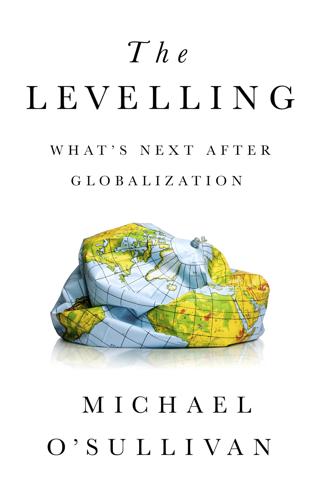
The Levelling: What’s Next After Globalization
by
Michael O’sullivan
Published 28 May 2019
Generally, the radical right-wing parties place much greater emphasis on noneconomic issues in their manifestos than do established left and right parties.6 In Europe, at least, there is much anti-elite criticism from euroskeptical, smaller, new parties.7 In the United States, criticism of the mainstream parties comes from above (the White House) and increasingly from the grass roots, where mainstream incumbent politicians (such as the Democratic congressman Joe Crowley) are being supplanted by new, previously unknown candidates (in the 2018 primary, by Alexandria Ocasio-Cortez, now congresswoman). The rise of protest-oriented parties is amplified by social media. Media and communication strategies have always conditioned politics. Ronald Reagan’s television performances (notably his 1984 “Morning in America” television ad) and the duel between John Kennedy and Richard Nixon in the 1960s are good examples of the power of media in politics. Radio had the same effect in the 1920s. Nor is Europe immune from the impact of media. Tony Blair probably prevailed over Gordon Brown as the leader of New Labour because of his media and communication skills, and in Germany in the late 1990s Oskar Lafontaine ceded the Social Democratic Party (SPD) leadership to Gerhard Schröder as the latter was apparently better on TV.8 Schröder then went on to become German chancellor from 1998 to 2005.
…
The first, overriding one is the goal of advancing China and increasing its prestige, or its dream, to be consistent. This may sound obvious, but it is a common, driving factor across China’s political class and is internalized across the country. China had this dream well before Trump’s promise to “Make America Great Again” and even as far back as Reagan’s proclamation of “Morning in America,” but it is only now that the West is becoming more aware of it. The focus of debate among Western commentators is the extent to which China wishes to reinforce its prestige. European countries, and then the United States by virtue of its economic and military power, have in recent centuries spread their influence, and in many cases empires, far and wide, even to the shores of China (in the Opium Wars, for example).
…
In this way they are like football clubs: there is always a sense of place, of roots, and of an identity even though players come and go and the level of support ebbs and flows too. Another reason established parties are drifting from their political moorings is that many of them are associated with events and individuals in history (Mustafa Kemal Atatürk, Éamon de Valera, Ronald Reagan, Helmut Kohl, and Charles de Gaulle are examples). As time passes, events foundational to their rise have less meaning and relevance for younger generations. In this respect, political parties may also follow a life cycle: an initial enthusiastic start-up phase, growth and government, entering the establishment, and then in some cases decline.
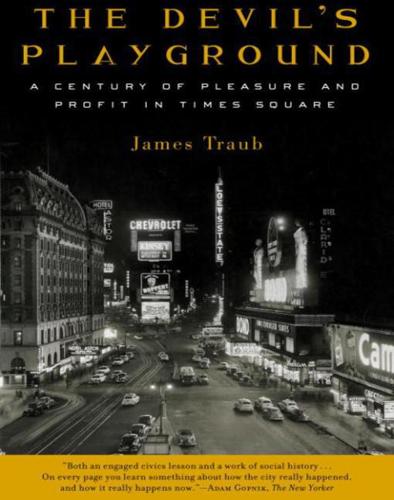
The Devil's Playground: A Century of Pleasure and Profit in Times Square
by
James Traub
Published 1 Jan 2004
The play was set in 1985—Ronald Reagan’s America—and the action took place in the scraggly backyard of a street of row houses in a barely-getting-along urban neighborhood. A half-demolished brick wall at the back of the stage formed an enclosure separating the world of the characters, black people who were no longer young and no longer hopeful, from the prosperous, front-yard world familiar to the audience. No one was going anywhere; and the ironically named King Hedley and his neighbors delivered furious monologues about the cruelty of life in Reagan’s morning-in-America world, while also not failing to ensure their own inevitable failure, and even destruction.
…
(One of the two main characters of Topdog/Underdog makes a living, when all else fails, playing three-card monte, presumably not far from the theater.) To emerge from these plays is to carry with you a memory, or perhaps just an image, of something that will not be assimilated into the glossy world of Broadway, just as King Hedley and his friends cannot be assimilated into Ronald Reagan’s America. Of course, most of these illusionistic worlds aren’t meant to be disturbing in the least. They’re meant to be—even if in fact they’re often not—delightful, sentimental, splashy, and sparkling, just as they have always been on Broadway. Frothy escapism is the bread and butter of Broadway.

The Geography of Nowhere: The Rise and Decline of America's Man-Made Landscape
by
James Howard Kunstler
Published 31 May 1993
There is nothing left of the flax mill itself, which was demolished before the turn of the twentieth century, but Schuylerville's economic history is otherwise highly visible in the landscape. The years I spent there, in a little brick cottage near the river, were the years when President Reagan proclaimed that it was "morning in America. " For Schuylerville, it was more like 4 P. M. on the first day of winter. Its economy lay in tatters. In this respect it was not unlike many other old towns that dot the banks of the Hudson and Mohawk river valleys in upstate New York. Six of the seven factories that once produced paper products in and around town had closed by 1970, and the remaining plant employed fewer than 100 people.
…
The nation responded by tossing Mr. Carter out of office and replaced him with a movie actor who promised to restore the Great Enterprise to all its former glory, whatever the costs. _ T H E G E O G R A P H Y O F N O W H E R E Aside from being nearly killed by an assassin early in his first term, Ronald Reagan was the luckiest President of the century. The oil cartel fell apart while he was in office without America's having to do a thing. Greed, desperation, and a war between Iraq and Iran that spanned both of Reagan's terms, foiled the oil cartel's ability to operate in concert and keep prices jacked up.
…
At the head of this court of nations stands the American Pavilion, a reproduction of Independence Hall. It is hard to imagine a more empty and embarrass ing spectacle than the show they put on there, performed by anima tronic robots-what a savings in actors' equity salaries and benefits ! It's as if Ronald Reagan's second inaugural address had been turned into a Broadway musical, the producers thinking that if the word America was invoked a thousand times the heavenly spheres would ring out in trib ute and gratitude. As it is, there is enough canned choral music to drown out a Super Bowl halftime show, so if the heavens answered nobody would hear them anyway.

The Prize: The Epic Quest for Oil, Money & Power
by
Daniel Yergin
Published 23 Dec 2008
That year Pickens was the highest-paid corporate executive in America.[11] The New Security In May of 1985, the leaders of the seven major Western powers met for their annual economic summit, this one in Bonn. The themes were free market politics, deregulation, and privatization. Promising a "new morning" in America, Ronald Reagan had recently been reelected by an enormous margin. His Administration had seen the passing of the defeatism and pessimism that had been so characteristic of the 1970s and that had, to a considerable degree, been the direct and indirect effect of the oil crisis. Instead of the malaise of inflation and recession, the United States was now enjoying a booming economy and bull market.
…
But oil was hardly uppermost on his political agenda once Bush moved on to other jobs—from ambassador to the United Nations and then chairman of the Republican National Committee during Watergate, to United States envoy to the People's Republic of China, to head of the CIA, and then to four years of campaigning unsuccessfully for the Republican nomination for the Presidency. In 1980, the man who beat him, Ronald Reagan, chose him as running mate, which led him to the Vice-Presidency. Unlike Jimmy Carter, who made energy the centerpiece of his Administration, Ronald Reagan was determined to make it a footnote. The energy crisis resulted mainly, he maintained, from regulation and the misguided policies of the United States government. The solution was to get the government out of energy and return to "free markets."
…
OPEC was nearing the end of the road, though neither the OPEC exporters, nor the industry, nor the Western consuming countries had any idea of what lay ahead. The Carter presidency had also come to an end. In a final humiliation for Jimmy Carter at the hands of the Iranians, the hostages taken at the American embassy in Tehran were not released until the very day he left office, succeeded by Ronald Reagan, whose buoyant confidence in himself and in America had proven much more palatable to the electorate than Carter's "malaise." Meanwhile, the oil market was responding to the phenomenal rise in prices over the 1970s and consumers' fears for the future. Yet the exporters were still unwilling to face up to the fact that the "objective conditions" of the marketplace were truly shifting.

Cultural Backlash: Trump, Brexit, and Authoritarian Populism
by
Pippa Norris
and
Ronald Inglehart
Published 31 Dec 2018
This American carnage stops right here and stops right now.’24 This discourse strikes a discordant note because it is so much at odds with the tradition of American ‘can do’ optimism. Not ‘the only thing we have to fear is fear itself’ (Roosevelt). Not ‘Ask what you can do for your country’ (Kennedy). Not ‘Its Morning Again in America’ (Reagan). Not ‘The Audacity of Hope’ (Obama). When authoritarian values and populist rhetoric are translated into public policies, the key issue concerns the need to defend ‘Us’ (‘our tribe’) through restrictions on ‘Them’ (‘the other’) – justifying restrictions on the entry of immigrants, refugees, asylum seekers, and foreigners, and the use of policies such as official language requirements or bans on certain religious practices.
…
In the US, the top decile got Part II Authoritarian-Populist Values 155 almost half of the total income in 2014, while in Sweden it got only 30 percent (World Inequality Database [WID] WID.world). The advanced welfare state culture introduced by Sweden’s long- dominant Social Democrats, had lasting effects. Conversely, in Anglo-American democracies, the neo-conservative regimes led by Ronald Reagan and Margaret Thatcher in the 1980s left a heritage in which conservatives in those countries seek to reduce government expenditures with almost religious zeal – and the US and United Kingdom now show greater income inequality than most other developed capitalist societies. In America, although real income has stagnated or shrunk for a growing share of the population, the inflation-controlled cost of attending college for four years has more than doubled since 1981, making social mobility increasingly difficult.70 This is shaping how many Americans see their social position: in 2000, 33 percent of the public described themselves as ‘working class’; by 2015, that figure had risen to 48 percent.71 The safety net is unraveling, as politicians and corporations cut back on healthcare, income security, and retirement pensions.72 Stiglitz argues convincingly that a minority of extremely rich individuals has attained tremendous political influence in the US, which they are using to shape policies that systematically increase the concentration of wealth, undermining economic growth, and diminishing investment in education, research, and infrastructure.73 Similarly, Hacker and Pierson argue that politics in the US is dominated by an alliance between big business and conservative politicians that has cut maximum taxes for the rich from 75 percent in 1970 to less than 35 percent in 2004 and sharply reduced regulation of the economy and financial markets.74 The Republicans under Trump have slashed taxes for corporate America, while leaving most middle-class households largely unchanged.75 To examine the cross-national evidence, levels of political mistrust in European societies can be compared with several aggregate economic performance indicators in each country, such as rates of unemployment and growth.
…
Indeed populist discourse has permeated modern American presidential campaigns, with (on the Republican side) the 1952 Eisenhower campaign, the 1996 Dole campaign, and the 1968 Nixon campaign, and (on the Democratic side) the 1988 Dukakis campaign, the 1972 McGovern campaign, and the 1992 Clinton campaign with the slogan ‘Putting People First.’84 Analysis of presidential speeches suggest that many US presidential candidates from across the political spectrum, including Jimmy Carter, Ronald Reagan, and Ross Perot, have depicted themselves as outsider reform crusaders vowing to clean up the corruption in Washington DC, to throw out beltway lobbyists, and to reform government.85 Trump’s angry anti-establishment tone and his authoritarian-populist tendencies also echo that of many other presidential leaders around the world.86 Latin America also has a long history of presidents using populist rhetoric to decry the corrupt establishment from the left-wing side of the political spectrum, preaching social justice, pacifism, anti-globalism, and anti-capitalism.87 In Asia, several political leaders have been seen Part III From Values to Votes 247 as populist; including Indian Prime Minister Narendra Modi, Thailand’s Thaksin Shinawatra,88 and the Philippines’ President Rodrigo Duterte.89 In Sub-Saharan Africa, several leaders are seen to have also adopted populist strategies, such as Zambia’s Michael Sata and South Africa’s Jacob Zuma.90 VII Conclusion Populist rhetoric asserts the legitimacy of popular sovereignty – if necessary, over-riding the pluralist principles of minority rights, elite expertise, conventional power structures in liberal democracy, and decision-making by elected representatives and professional bureaucrats.

A Short History of Progress
by
Ronald Wright
Published 2 Jan 2004
John Steinbeck once said that socialism never took root in America because the poor see themselves not as an exploited proletariat but as temporarily embarrassed millionaires. This helps explain why American culture is so hostile to the idea of limits, why voters during the last energy shortage rejected the sweater-wearing Jimmy Carter and elected Ronald Reagan, who scoffed at conservation and told them it was “still morning in America.”49 Nowhere does the myth of progress have more fervent believers. Marx was surely right when he called capitalism, almost admiringly, “a machine for demolishing limits.” Both communism and capitalism are materialist Utopias offering rival versions of an earthly paradise.

The Psychology of Money: Timeless Lessons on Wealth, Greed, and Happiness
by
Morgan Housel
Published 7 Sep 2020
And the economic facts of the years between the early 1970s through the early 2000s were that growth continued, but became more uneven, yet people’s expectations of how their lifestyle should compare to their peers did not change. 7. The boom resumes, but it’s different than before. Ronald Reagan’s 1984 “Morning in America” ad declared: It’s morning again in America. Today more men and women will go to work than ever before in our country’s history. With interest rates at about half the record highs of 1980, nearly 2,000 families today will buy new homes, more than at any time in the past four years.
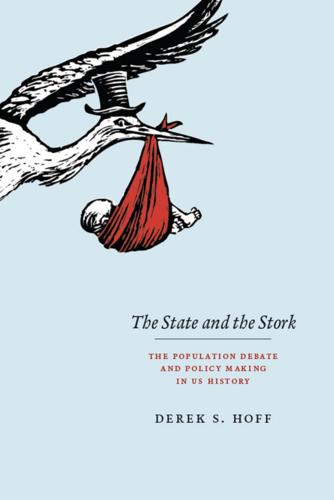
The State and the Stork: The Population Debate and Policy Making in US History
by
Derek S. Hoff
Published 30 May 2012
Although many of the report’s specific projections (e.g., those regarding deforestation and species loss) have proven accurate, conservatives commonly deride it for epitomizing the Chicken Little mentality of population doomsayers as well as the general malaise of the Carter years.5 The report did not produce any policy ripples. Ronald Reagan’s optimistic and wellreceived declaration of “morning in America” indicated that the Malthusian epoch—much longer than a moment—was long gone. Thereafter, the US government formally renounced Malthusianism. In 1984, the Reagan administration’s delegation to the UN International Population Conference in Mexico City called population growth a “neutral phenomenon.”6 In spite of the prevailing optimistic rhetoric, few policy makers have welcomed rapid population growth in the poorest nations (especially in 246 epilogue sub-Saharan Africa).
…
Right now, we are not making it.”46 The idea of a demographically induced gap between current and necessary economic growth received the administration’s stamp of approval in the 1962 Economic Report of the President, which CEA member James Tobin called one of the agency’s two “economic manifestos” (the other came under Ronald Reagan).47 The impression that the demographic bubble forced the economy to work harder just to stand still was thus an important weapon in the push for an aggressive full-employment policy, which culminated in major Keynesian-inspired tax cuts in 1964. managing the great society’s population growth 143 The aggregate-demand camp’s emphasis on the sluggish macroeconomy did not run counter to SPK.48 The community of economists surrounding the Kennedy and Johnson administrations maintained that, given the state’s ability to spur prosperity and full employment, population growth was a neutral economic variable—and hence the regulation of population growth proposed from various quarters could proceed.
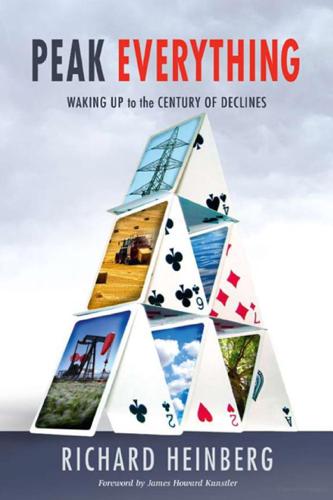
Peak Everything: Waking Up to the Century of Declines
by
Richard Heinberg
and
James Howard (frw) Kunstler
Published 1 Sep 2007
Corporate leaders backing the Republicans had managed to make common cause with the burgeoning Christian fundamentalist movement and the anti-Communist fringe; Nixon had perfected the strategy of bringing social conservatives from the old Confederacy into the Republican Party; and the party had found its perfect pitchman — a former movie actor and ex-spokesman for General Electric. Ronald Reagan and the Republican PR machine pushed all of the right buttons, even resorting to an “October surprise” to manipulate the Iranian hostage crisis to their benefit. Reagan and George H. W. Bush (who, during the mid-1980s, may have been the de facto president) were the last US leaders of the World War II generation, their cohort’s final gift to the nation. It was morning in America, but let the Earth be damned: the Republicans had found an electoral strategy so successful that Democrats began trying to copy it, so that since 1980 the entire US political system has lurched toward ever-increasing economic inequality, globalization, imperialism, and militarism.
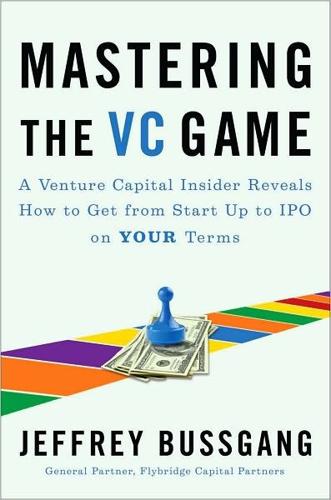
Mastering the VC Game: A Venture Capital Insider Reveals How to Get From Start-Up to IPO on Your Terms
by
Jeffrey Bussgang
Published 31 Mar 2010
It is no coincidence that the MIT $100,000 business plan competition, and dozens like it around the country, has a steadily growing number of entrants each year. Student-led entrepreneurial teams clamor to submit business plans in the hopes of winning a little seed money and a lot of notoriety. I can only conclude that, in the minds of the graduates of American business schools, it is always “morning in America” (thank you, Ronald Reagan) and that our entrepreneurial economy is forever a city on a shining hill (thank you, John Winthrop), even when there is economic upheaval. In fact, now more than ever, the entrepreneurial economy is an appealing destination for top talent around the world. IT’S NOT (PRIMARILY) ABOUT THE MONEY One thing you do not hear these graduates talk about, at least not directly, is the money.
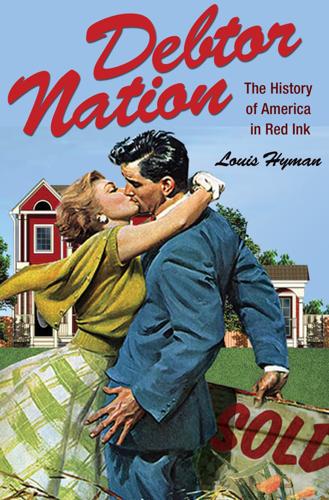
Debtor Nation: The History of America in Red Ink (Politics and Society in Modern America)
by
Louis Hyman
Published 3 Jan 2011
Johnston Cities of Knowledge: Cold War Science and the Search for the Next Silicon Valley by Margaret Pugh O’Mara 378 SERIES LIST Labor Rights Are Civil Rights: Mexican American Workers in Twentieth-Century America by Zaragosa Vargas More Equal Than Others: America from Nixon to the New Century by Godfrey Hodgson Pocketbook Politics: Economic Citizenship in Twentieth-Century America by Meg Jacobs Taken Hostage: The Iran Hostage Crisis and America’s First Encounter with Radical Islam by David Farber Defending America Military Culture and the Cold War Court-Martial by Elizabeth Lutes Hillman Morning in America: How Ronald Reagan Invented the 1980s by Gil Troy Phyllis Schlafly and Grassroots Conservatism: A Woman’s Crusade by Donald T. Critchlow The Silent Majority: Suburban Politics in the Sunbelt South by Matthew D. Lassiter White Flight: Atlanta and the Making of Modern Conservatism by Kevin M. Kruse Troubling the Waters: Black-Jewish Relations in the American Century by Cheryl Lynn Greenberg In Search of Another Country: Mississippi and the Conservative Counterrevolution by Joseph Crespino The Shifting Grounds of Race: Black and Japanese Americans in the Making of Multiethnic Los Angeles by Scott Kurashige Americans at the Gate: The United States and Refugees during the Cold War by Carl J.
…
The interest on credit cards, when they became widely available, could be deducted as well. 252 CHAPTER SEVEN Until 1986, that is. Congress passed a tax reform law that phased out the interest deduction on all forms of consumer borrowing except for mortgages. Wrapped up in the tax reform act that Ronald Reagan called the “second American revolution,” was a provision to end the long-standing interest deduction for nearly all types of consumer credit.136 Other features of the Tax Reform Act of 1986 received more attention at the time—the top marginal tax rate was dropped from 50 percent to 33 percent while the lowest tax rate increased from 15 percent to 18 percent— but leaving consumers only able to deduct the interest on their home borrowing, radically altered the terrain of consumer credit, transforming the relationship between home equity loans and other forms of consumer credit, as well as making debt absolutely more expensive.

Worth Dying For: The Power and Politics of Flags
by
Tim Marshall
Published 21 Sep 2016
The flag also featured on Bruce Springsteen’s most successful album, Born in the USA; theories abounded as to the intentions behind the album artwork and what political message it conveyed. As Springsteen said in a Rolling Stone interview: ‘The flag is a powerful image, and when you set that stuff loose, you don’t know what’s gonna be done with it.’ On the political front, the flag was used to tremendous effect in Ronald Reagan’s seminal TV ad campaign of 1984, ‘Morning in America’. Towards the end of the fifty-nine-second commercial, the voiceover delivers its killer line: ‘It’s morning again in America’, and then Uncle Sam’s future – young children – gaze in admiration as the Stars and Stripes goes up into a new day, a day of hope. The use of sunrise, the flag and an expectation of a bright future spoke to the collective consciousness of a nation still recovering from the Vietnam War and unsure of itself after the Carter presidency of 1977–81 in which Iran humiliated the USA during the Tehran Embassy hostage crisis.

The Age of Stagnation: Why Perpetual Growth Is Unattainable and the Global Economy Is in Peril
by
Satyajit Das
Published 9 Feb 2016
In political language, stagflation is the misery index, the simple addition of the inflation rate to the unemployment rate. During the 1970s, the US misery index hovered around the mid to high teens, peaking at around 22 percent by 1980. But soon political change, different economics, innovation, and luck would usher in “morning in America,” and elsewhere. The economy would recover, giving the postwar boom new impetus. In 1979, Margaret Thatcher became the first woman prime minister of the UK. In 1980, Ronald Reagan was elected US president. They were to preside over a significant shift in how economies were run. There was increasing skepticism about government programs and intervention in the economy. The existing model of a mixed economy, with significant state involvement, had been unable to deal with stagflation.
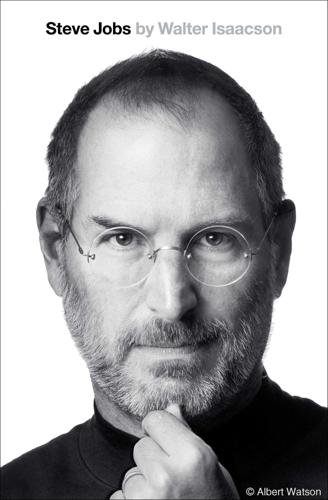
Steve Jobs
by
Walter Isaacson
Published 23 Oct 2011
I’d love to get Lee Clow out of retirement, and we can come up with great commercials for him,” Jobs told me a few weeks after the dinner. Jobs had been fighting pain all week, but the talk of politics energized him. “Every once in a while, a real ad pro gets involved, the way Hal Riney did with ‘It’s morning in America’ for Reagan’s reelection in 1984. So that’s what I’d like to do for Obama.” Third Medical Leave, 2011 The cancer always sent signals as it reappeared. Jobs had learned that. He would lose his appetite and begin to feel pains throughout his body. His doctors would do tests, detect nothing, and reassure him that he still seemed clear.
…
In his earnest way, Wozniak had openly answered the reporter’s questions when he called. Yes, he said, he felt that Apple had been giving short shrift to the Apple II division. “Apple’s direction has been horrendously wrong for five years,” he said. Less than two weeks later Wozniak and Jobs traveled together to the White House, where Ronald Reagan presented them with the first National Medal of Technology. The president quoted what President Rutherford Hayes had said when first shown a telephone—“An amazing invention, but who would ever want to use one?”—and then quipped, “I thought at the time that he might be mistaken.” Because of the awkward situation surrounding Wozniak’s departure, Apple did not throw a celebratory dinner.
…
But his heart was never fully in it, which is why the alliance would turn out to be short-lived. It began at a party, a truly memorable one, for the seventieth birthday of the Washington Post publisher Katharine Graham in June 1987 in Washington. Six hundred guests attended, including President Ronald Reagan. Jobs flew in from California and IBM’s chairman John Akers from New York. It was the first time they had met. Jobs took the opportunity to bad-mouth Microsoft and attempt to wean IBM from using its Windows operating system. “I couldn’t resist telling him I thought IBM was taking a giant gamble betting its entire software strategy on Microsoft, because I didn’t think its software was very good,” Jobs recalled.

How I Built This: The Unexpected Paths to Success From the World's Most Inspiring Entrepreneurs
by
Guy Raz
Published 14 Sep 2020
For some, that gap can look like a canyon—or, worse, an abyss. And crossing it seems like the scariest, most foolish thing anyone could consider. In 1984, the creator of Sam Adams beer, Jim Koch, was staring long and hard across the chasm. It was spring. It was the beginning of the baseball season in Boston, and it was about to be “morning in America.” Ronald Reagan was preparing for what would be a landslide reelection to the presidency, the economy had finally turned around after years in recession, the US Olympic team was about to run away from the competition at the Summer Games in Los Angeles, and Jim was in the middle of his sixth year as a management consultant for Boston Consulting Group (BCG), already earning $250,000 per year (that’s more than $600K in 2020 dollars) before his thirty-fifth birthday.

Shutdown: How COVID Shook the World's Economy
by
Adam Tooze
Published 15 Nov 2021
It was not the first moment of modern American malaise. President Carter would become notorious for an address he gave to the American nation on that very topic in the summer of 1979, amid the fallout from the Iranian revolution and the second energy crisis.72 One of the promises of the 1980s market revolution was that Ronald Reagan’s “morning in America” would heave the country out of its slump, just as Thatcher promised to do for Britain. Donald Trump, the party boy of 1980s Manhattan, was the living embodiment of that new era of swagger. But Trump also personified the ugly truth about that moment, which is that the market revolution left a large part of American society behind.

The Gamble: General David Petraeus and the American Military Adventure in Iraq, 2006-2008
by
Thomas E. Ricks
Published 14 Oct 2009
Even as the ghosts of Vietnam flitted over Washington, there was a growing sense among defense experts that the strategic consequences of the Iraq war could be far worse than that earlier war. The United States could walk away from Vietnam, a relatively isolated country with few resources, and six years later, with the election of Ronald Reagan, declare it “morning in America.” (Of course, it didn’t feel like that in Cambodia, or in the reeducation camps of Vietnam where former allies of the United States were held.) It was unlikely to be morning in Iraq anytime soon. The Iraq war “makes Vietnam look like a cakewalk,” said retired Air Force Gen. Charles Wald, a Vietnam veteran.
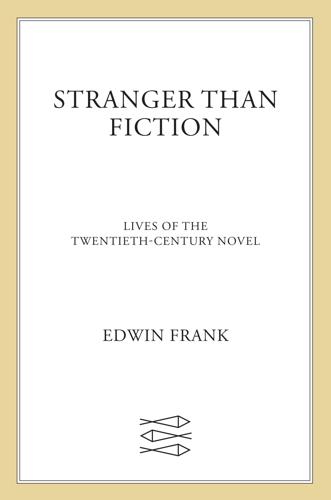
Stranger Than Fiction: Lives of the Twentieth-Century Novel
by
Edwin Frank
Published 19 Nov 2024
Naipaul is quoting Emerson writing about England at the height of its power, as America may be deemed to be as he writes. “Like Emerson in England,” Naipaul concludes, “I seemed in the convention hall of Dallas ‘to walk on a marble floor, where nothing will grow.’” Nineteen eighty-four: it’s “Morning in America,” and looking back now, we know something of what lies ahead. At the end of The Enigma of Arrival we have arrived in an American world (Naipaul visits a fundraiser on the ranch of Nelson Bunker Hunt, who became notorious for trying to corner the world silver market), and knowing as we do now that the 1984 convention effectively consolidated Reaganism as the century’s last reigning ism, Naipaul’s foresight is impressive.
…
But then, of course, he does see, sees that by looking at “not the formal, staged occasion, but things around the occasion,” he can write, and with a vengeance. And “it was out of that excitement,” he tells us, the excitement of “finding experience where I thought there had been nothing, and out of that reawakened delight in language, that I began immediately afterward to write my book.” Old Jack and Ronald Reagan! It turns out that Naipaul’s book is born out of an encounter with modern political spectacle quite as much as it is a record of his childhood or middle years or stands as a ceremonial reckoning with death. And to read V. S. Naipaul’s magazine piece “The Air-Conditioned Bubble: The Republicans in Dallas,” as the The Enigma of Arrival invites us to do, is to encounter a prescient, even prophetic vision of that time and of the time that was to come.

Why the West Rules--For Now: The Patterns of History, and What They Reveal About the Future
by
Ian Morris
Published 11 Oct 2010
This star-studded event, featuring some of the world’s leading policy makers, took place on a bright winter’s day. The sun shone warmly from a clear blue sky as we made our way to the venue. The stock market, house prices, employment, and consumer confidence were at or near all-time highs. It was morning in America. Over breakfast we heard from former secretaries of state and defense about the nuclear, biological, and terrorist threats facing us. Before lunch we learned about the shocking scale of environmental degradation and the high risk that international security would collapse, and as we ate we were told that global epidemics were virtually inevitable.
…
.… FOR NOW 582–83 economic output estimates: National Intelligence Council 2008, p. 6; Wilson and Stupnytska 2007; Hawksworth and Cookson 2008; Maddison 2006; Fogel 2007. 583 “If the courses” and “He became”: Dickens, Christmas Carol, Staves 4 and 5. 585 “Chimerica”: Ferguson and Schularick 2007; Ferguson 2009. 586 2010 growth predictions: International Monetary Fund 2009, Table 1.1. 586 Congressional Budget Office: Douglas Elmendorf, cited from “Falls the Shadow: The Deficit and Health Care,” The Economist, July 25, 2009, p. 25 (available at http://www.economist.com). 586 “After … 1989”: cited from “May the Good China Preserve Us,” The Economist, May 23, 2009, p. 47 (available at http://www.economist.com). 587–88 2030 and 2040 incomes calculated from Maddison 2006, Table 5, and Fogel 2007, Tables 1, 2. Maddison expresses GDP in 1990 US$; I have converted these to 2000 US$ using Bureau of Labor Statistics values (http://stats.bls.gov/). 588 “Soothing Scenario”: J. Mann 2007, p. 1. 588 “Trade freely”: George W. Bush, speech at the Ronald Reagan Library, Simi Valley, California (November 19, 1999), cited in Dietrich 2005, p. 29. 589 “contested modernities”: Jacques 2009, p. 100. 591 “Our way of life”: Jeremy Rifkin, from an interview conducted in 2000, cited from Singer 2009, p. 105. 592 “a future period”: Kurzweil 2005, pp. 5, 24. 593 “the Rapture for Nerds”: an expression coined by the science fiction novelist Ken MacLeod in his novel The Cassini Division (1998). 593 “criticism from incredulity”: Kurzweil 2005, p. 432. 593 “When a scientist”: Richard Smalley, cited from Nicholas Thompson, “Downsizing: Nanotechnology—Why You Should Sweat the Small Stuff,” Washington Monthly, October 2000 (http://washingtonmonthly.com/features/2000/0010.thompson.html). 594 “We can rebuild him”: The Six Million Dollar Man, ABC Television, 1974–78. 595 “We’re not playing”: Craig Venter, cited from Carr 2008. 595 “network-enabled telepathy”: Roco and Bainbridge 2002, p. 19. 599 “Altered frequencies”: Intergovernmental Panel on Climate Change 2007, pp. 12–13. 600 “the really scary stuff,” “the even scarier stuff,” and “global weirding”: T.